As we left the heat of Mashhad for the relative cool of Ashgabat at only 28 degrees, we dressed for heat. A bit later after a lot of climbing up to the border we were in heavy mist hurriedly finding extra layers to go through the border.
This one worried us we’d read so much about banned literature, pictures and medical drugs. As it was, the main problem was on the Iranian side where they wanted our camping stuff off the truck as well as our bags. They luckily provided some carts for this on their side. After this we had to just try and manage all the loose items through the Turkmenistan side. We were surrounded by an ever growing number of women in ethnic dresses with large numbers of identical black plastic bags, many sitting on the low fold up stools they had brought with them.
We all had a covid test – no name taken to relate to the test, just a formality for a healthy charge. We had a brief visit to the desk for either a photo or a fingerprint, not both, and we were through. No checking our bags – apart from a scan and no checking our phones. We had a new guide for this country as it is rather tricky to navigate with many rules to fit around.
Once through we had a drive through a security zone (no photos) before another passport check after which we had to leave the truck in a coach park and take mini buses into Ashgabat.
Our drive in was magical – out of the desert into a paradise of green parks and white buildings .
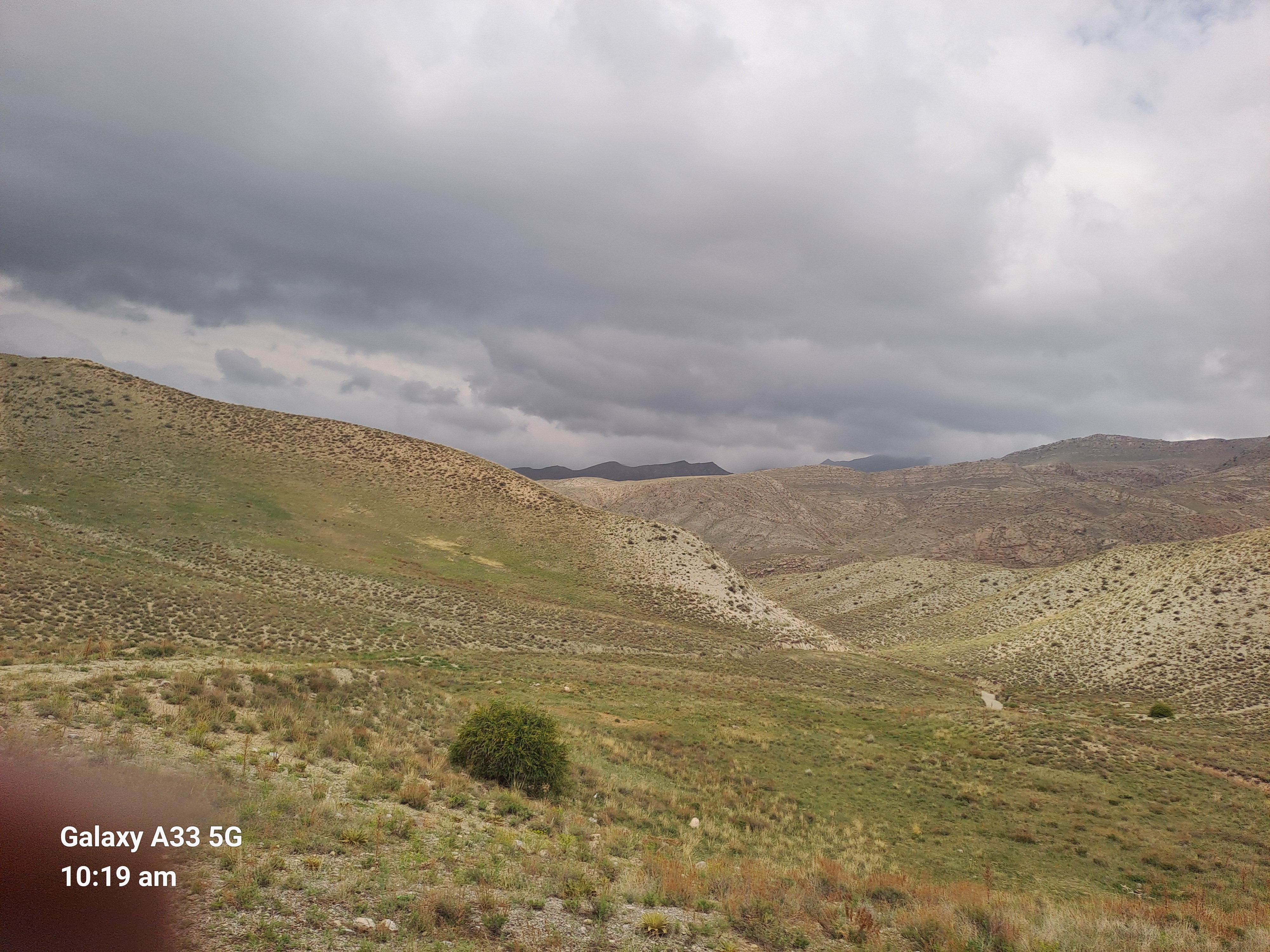
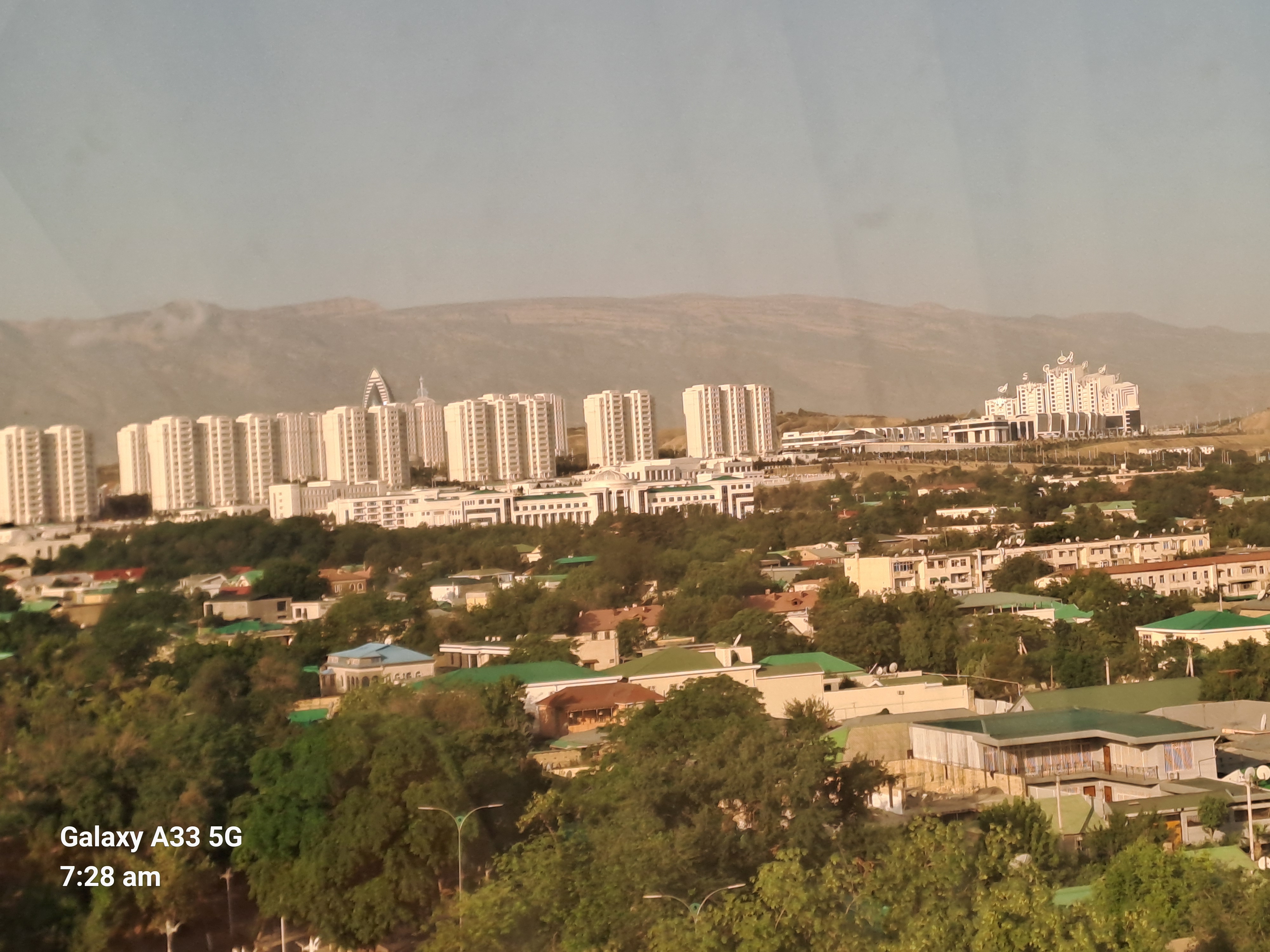
There were empty dual carriageways and widely spaced out white buildings with blue windows being a very popular theme. It was all a little surreal. There was also no advertising. Large shops etcetera all being hidden. They seemed very quiet and empty. The car parks are all hidden away underneath with the entrances at the back. However everywhere we went was empty.

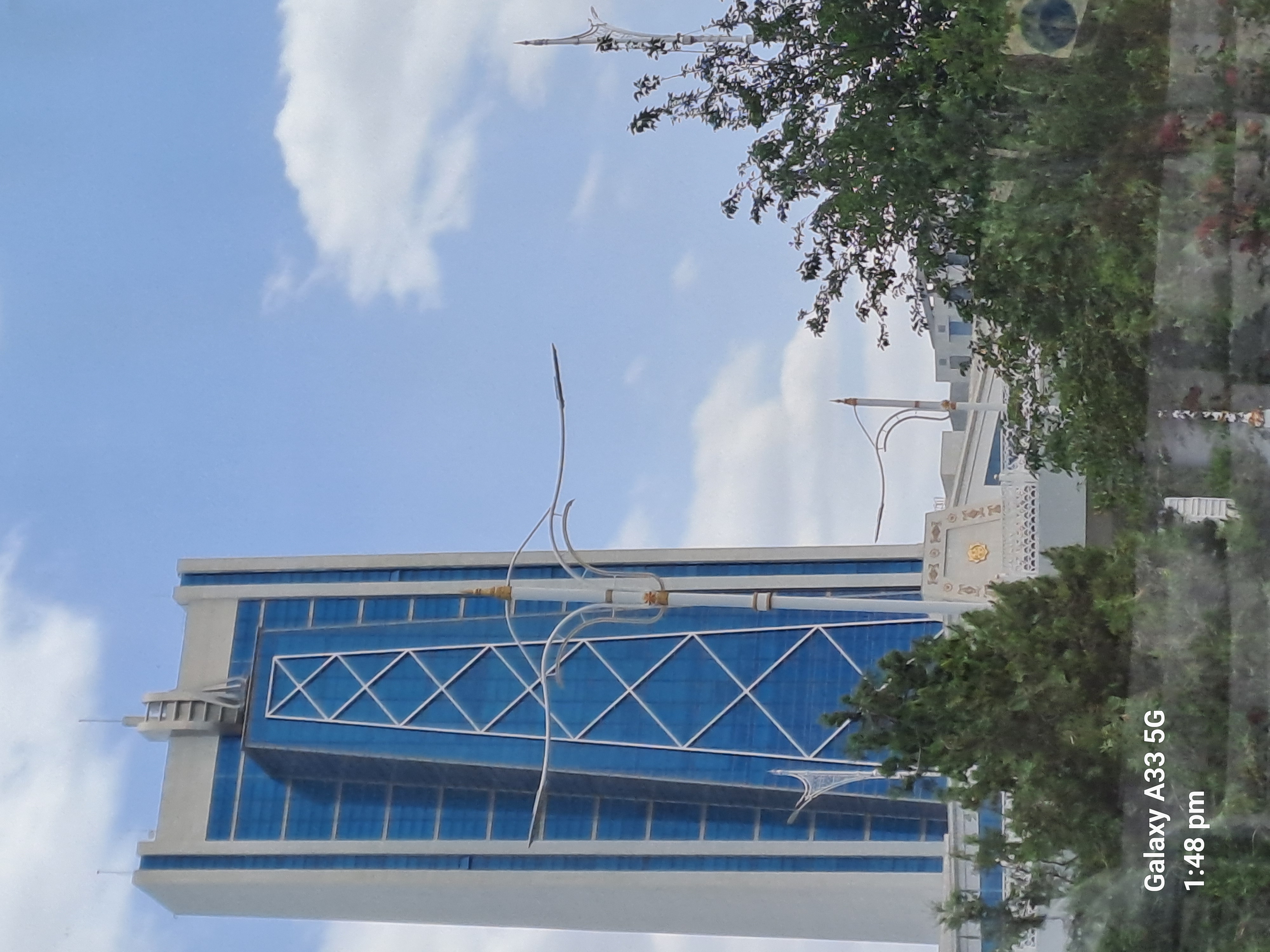
The city was built in 1881 by Russia. However it was devastated by an earthquake in 1948. 1000,000 people were killed and the city razed. Stalin came and flew over it and committed to rebuilding.
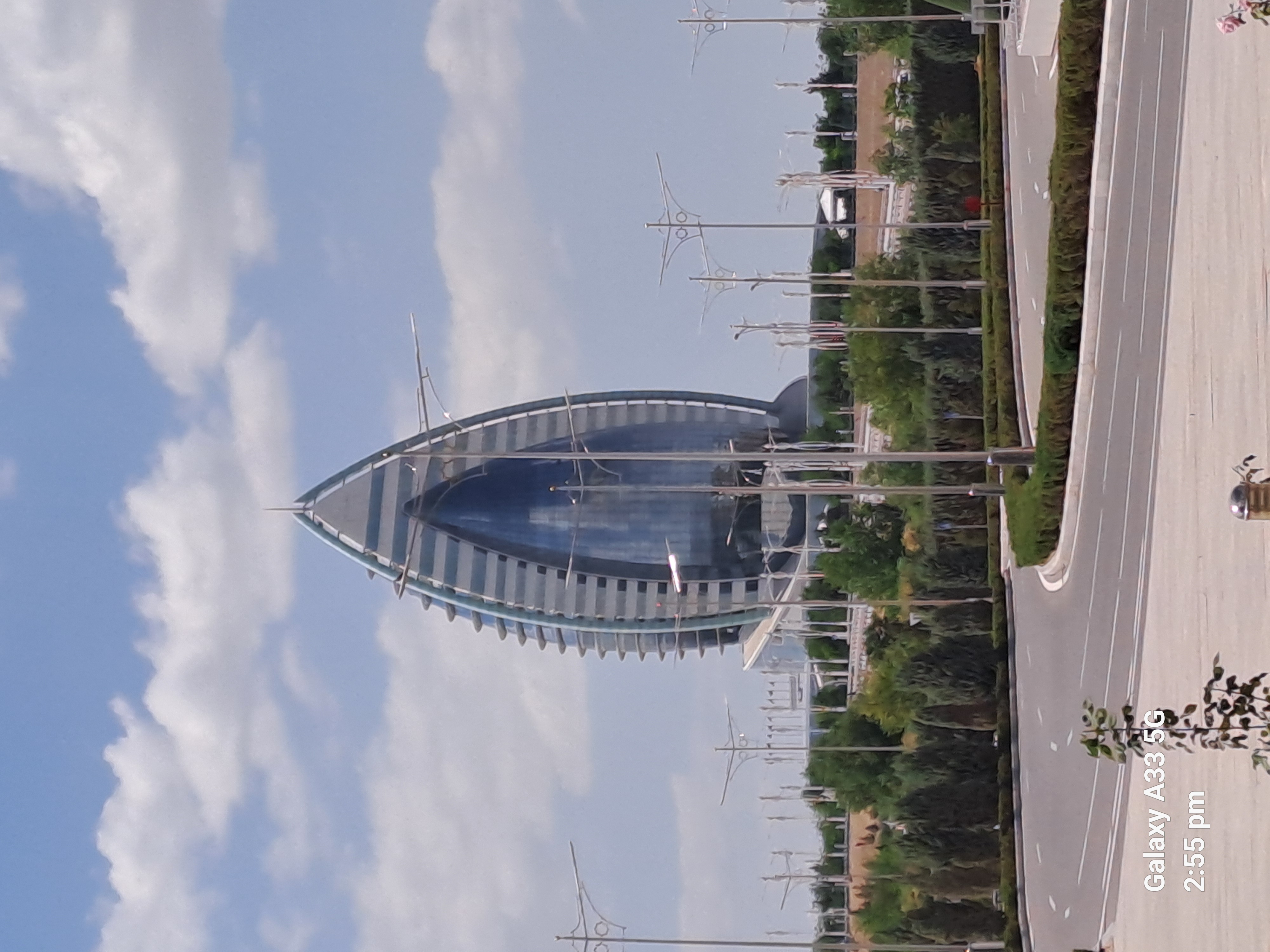
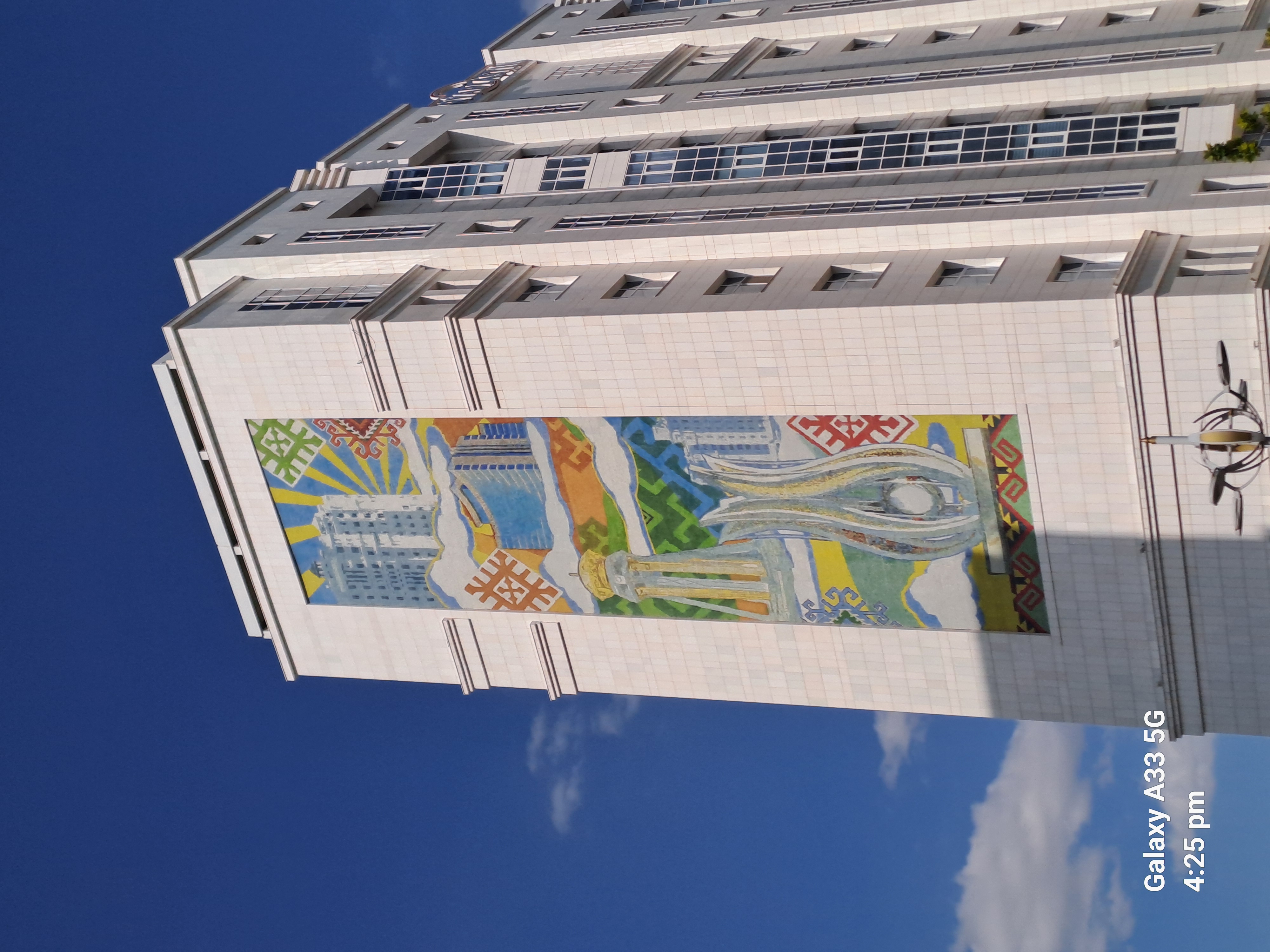
The first president lost his family in the earthquake. We visited the building in honour of them next to the world’s biggest mosque. In remembrance of his family homeless children are looked after until they are 18.
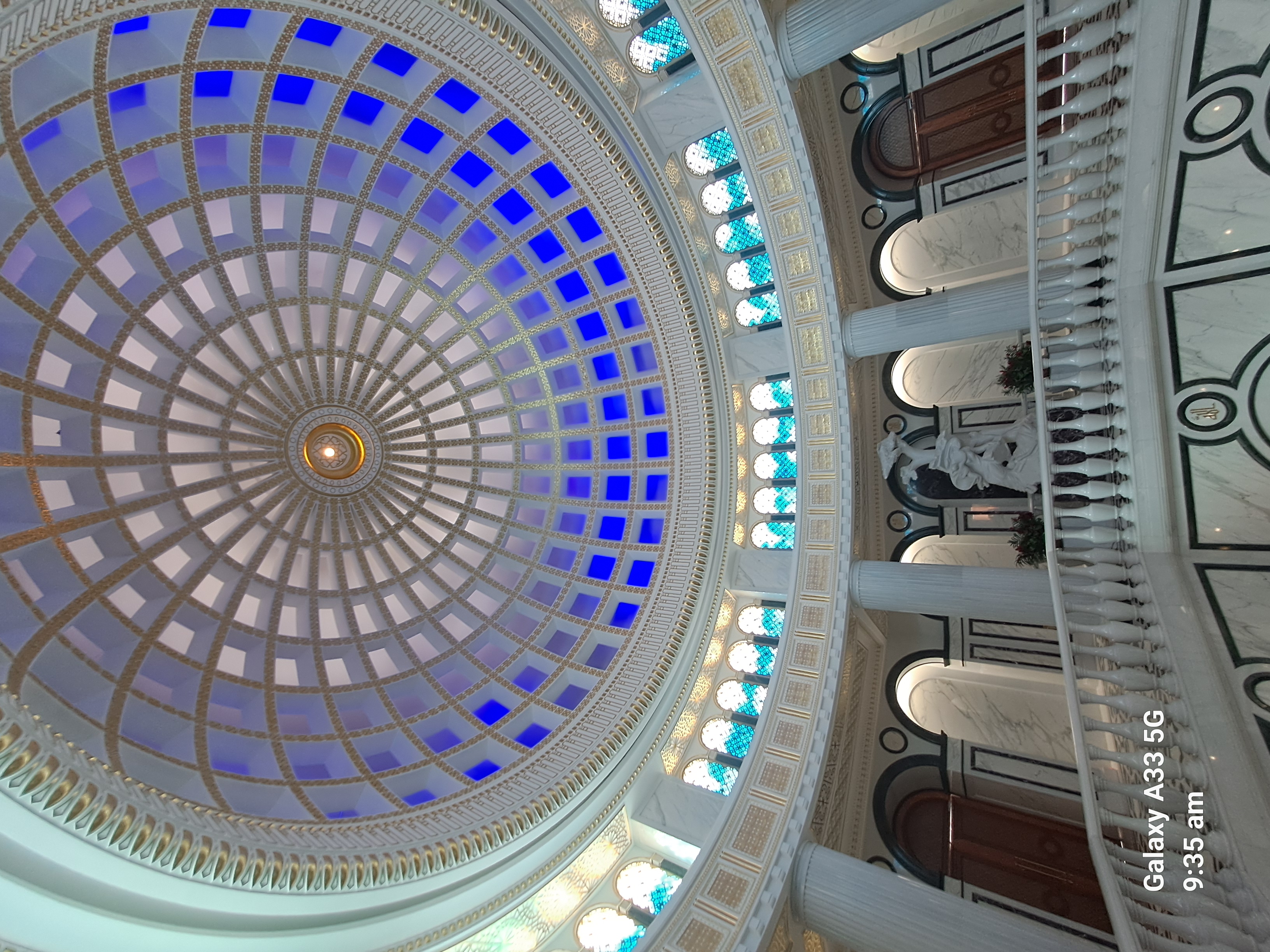
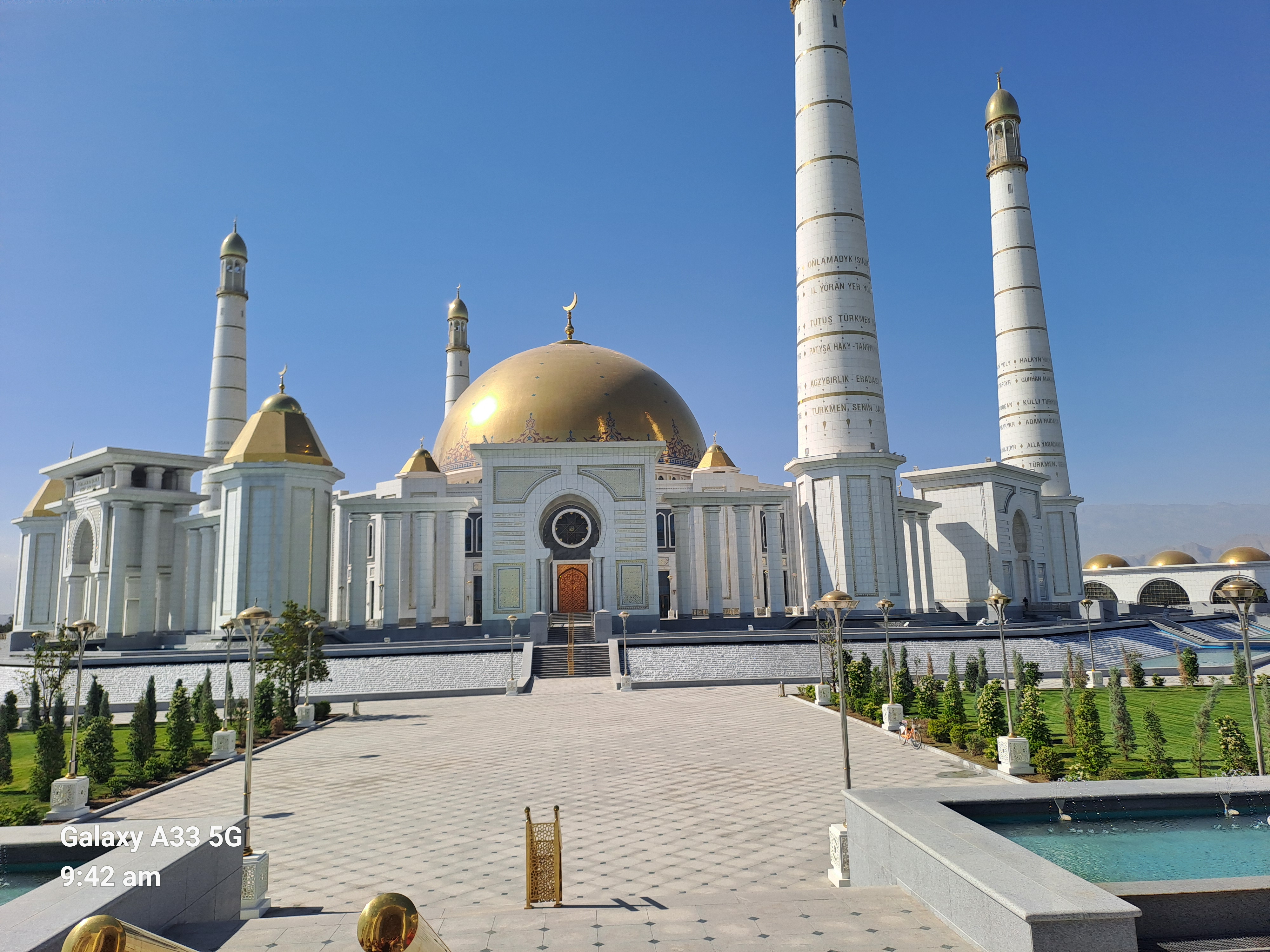
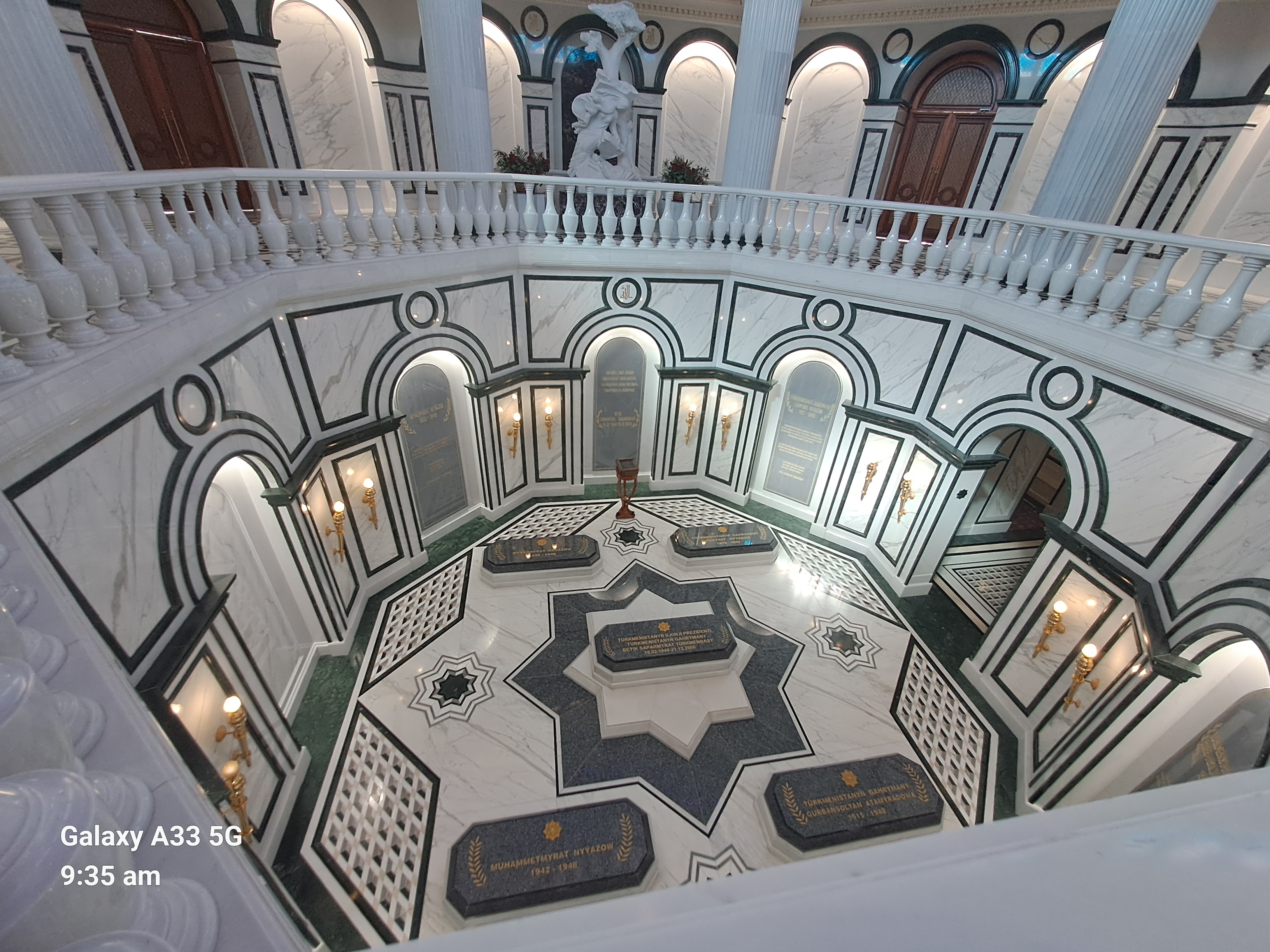
The mosque next door unusually has writing built in that isn’t in Arabic. These are texts from the president’s book.
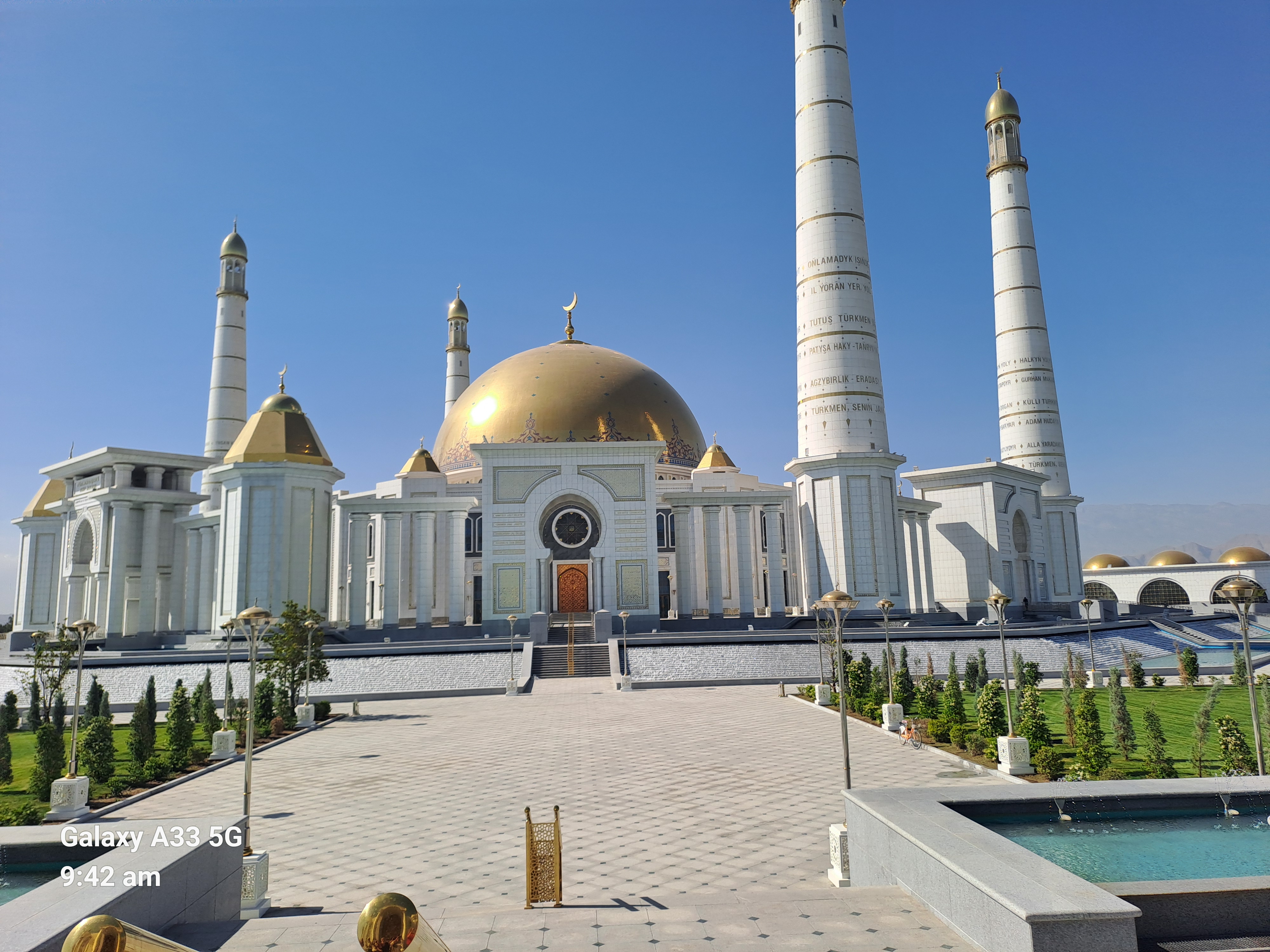
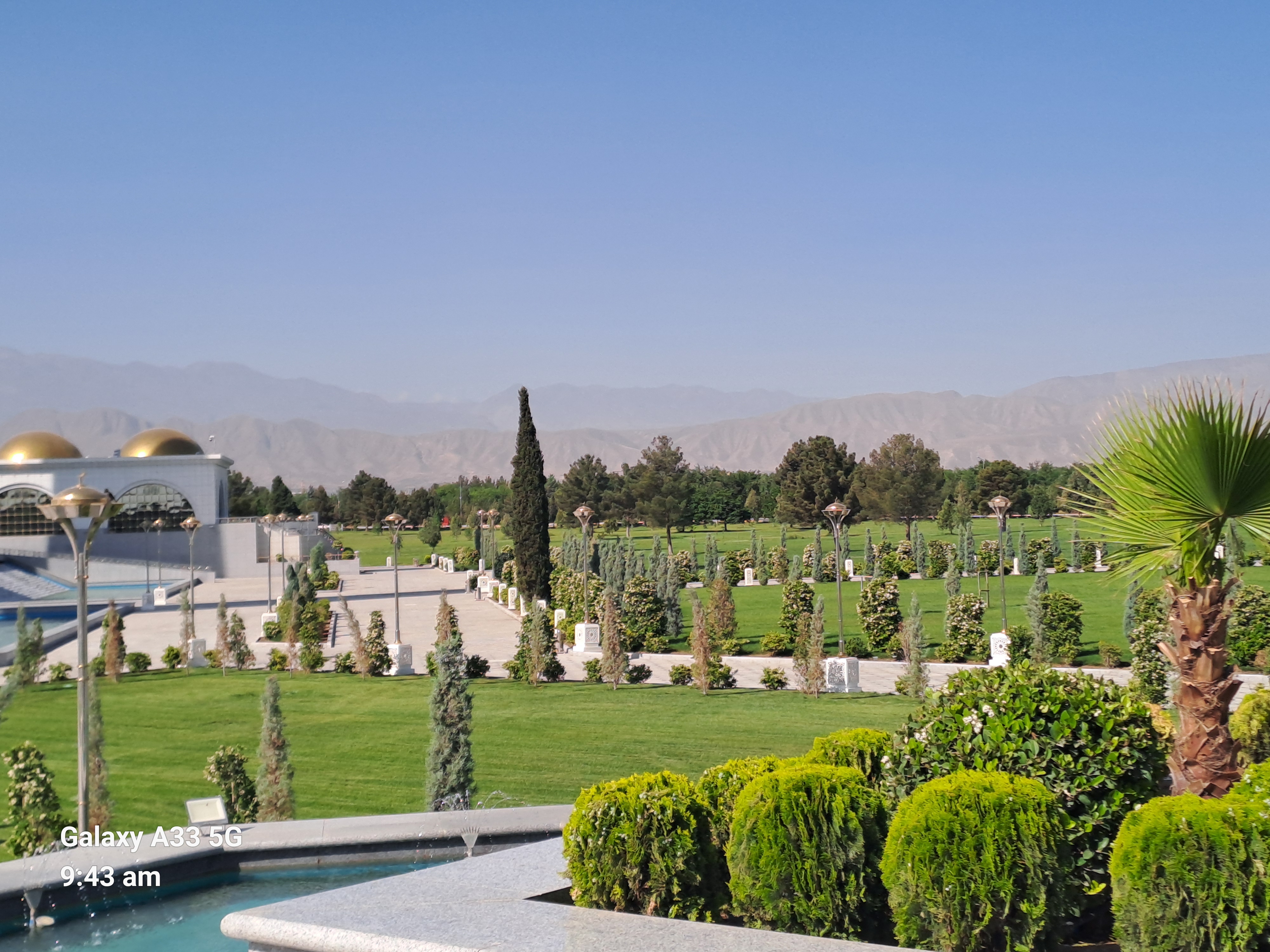
hkku
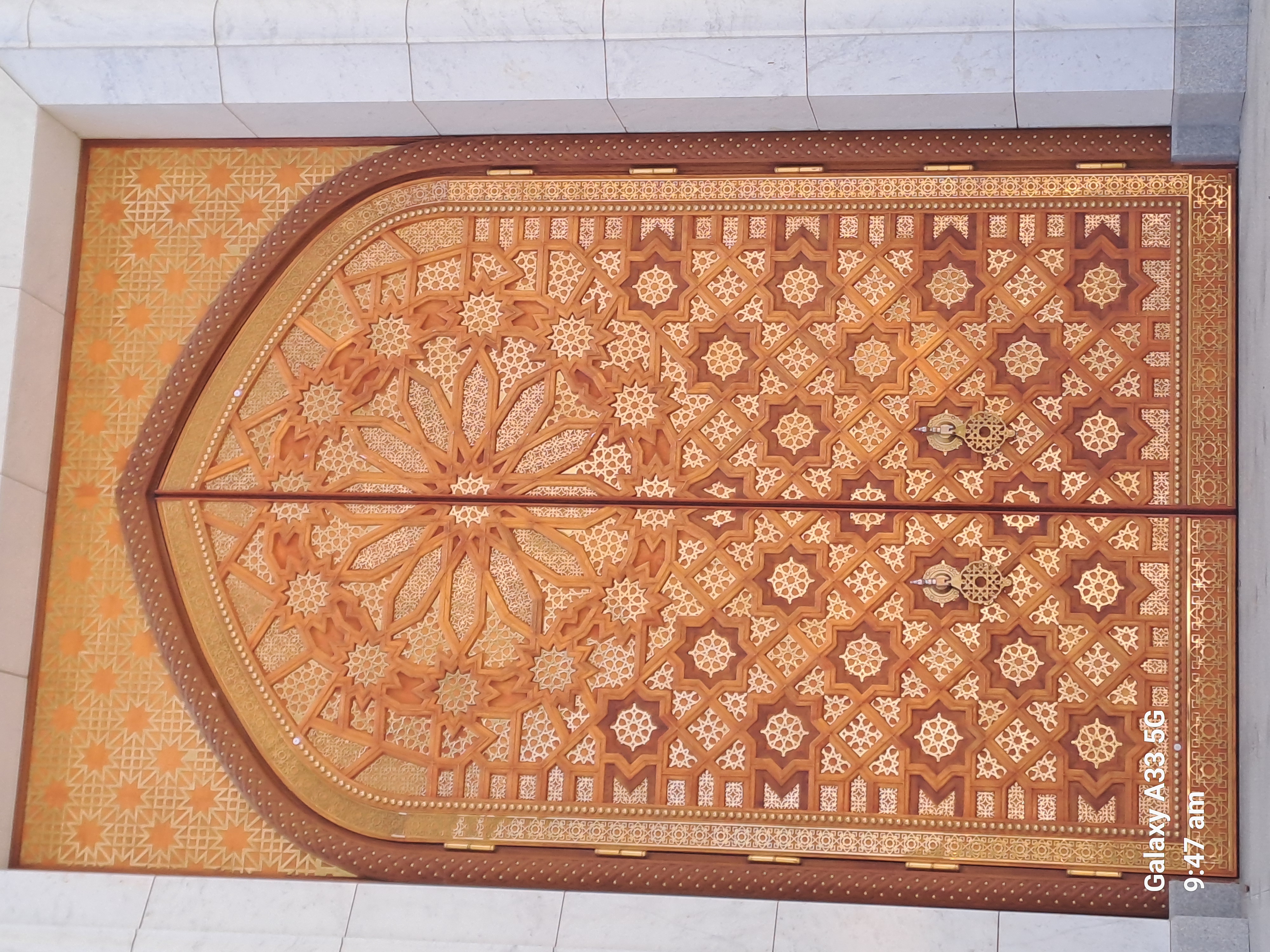
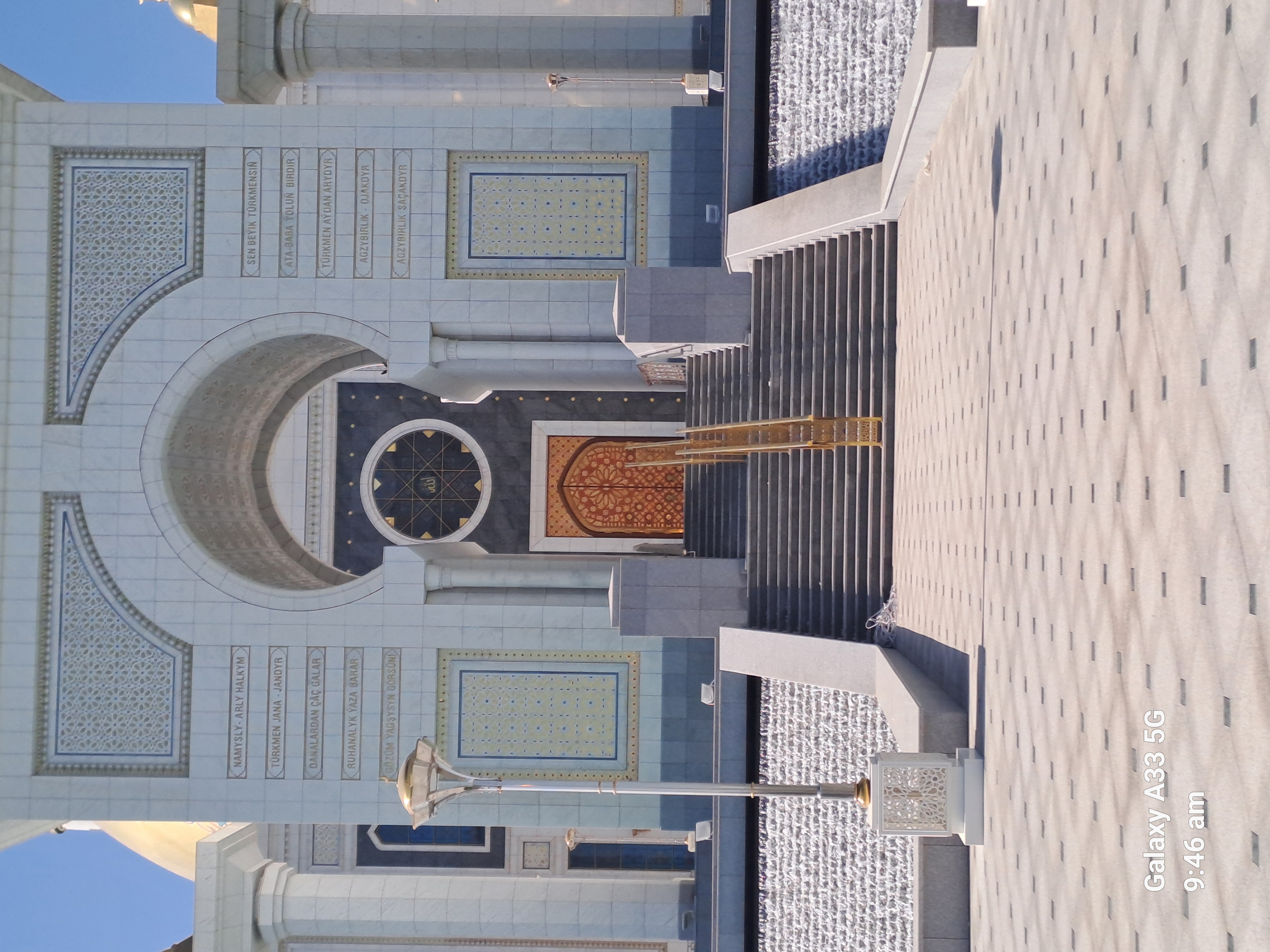
It has 48 windows for the 1948 earthquake. Sometimes there are 100,000 people inside and another 100,000 outside. The carpet is one of the biggest in the world but not the biggest, that is in a museum. The pattern in the star carpet represents the five main tribes and provinces. The eight point star is the official symbol of Turkmenistan. The horse is also a symbol and frequently given as state presents.
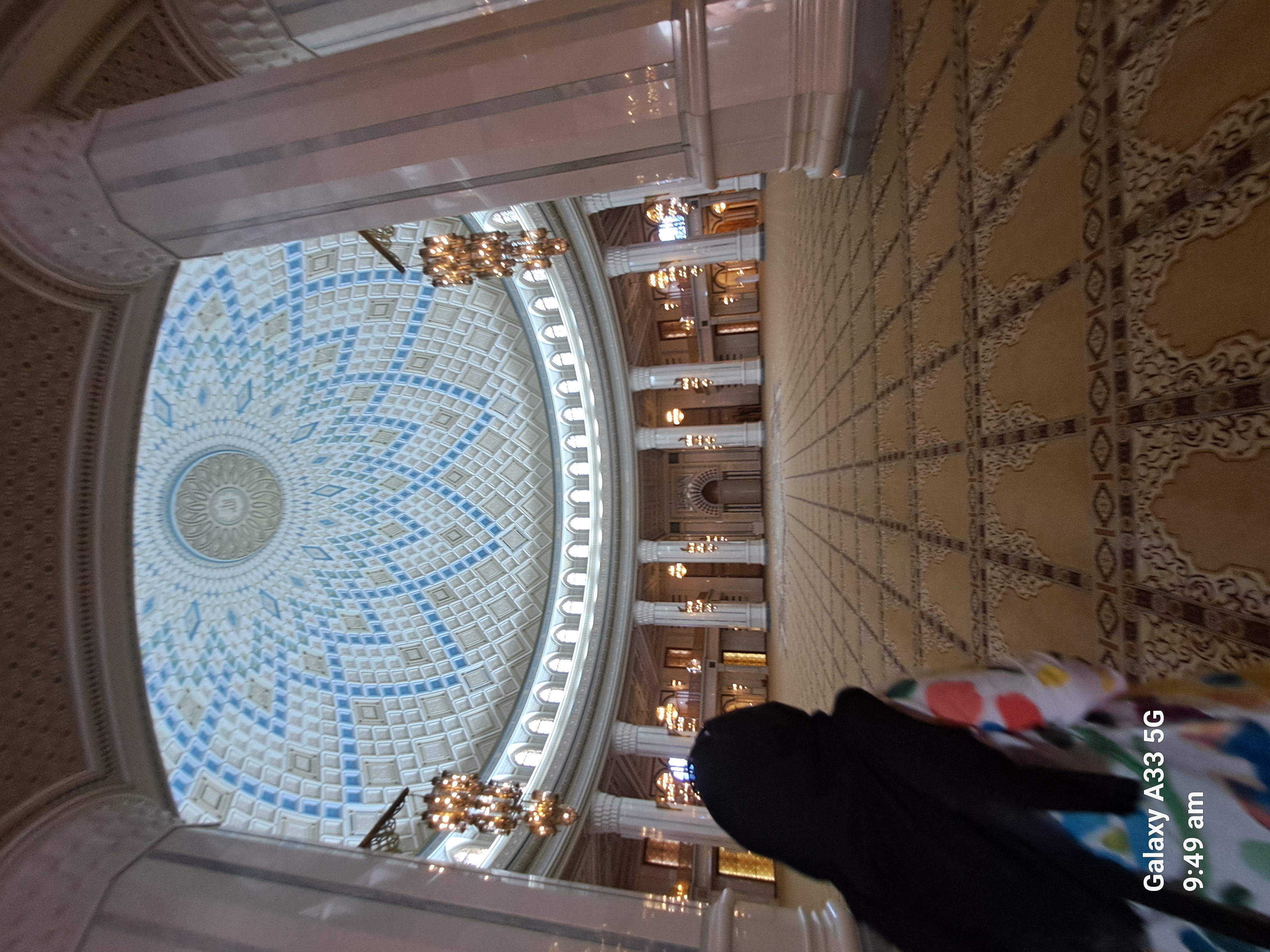
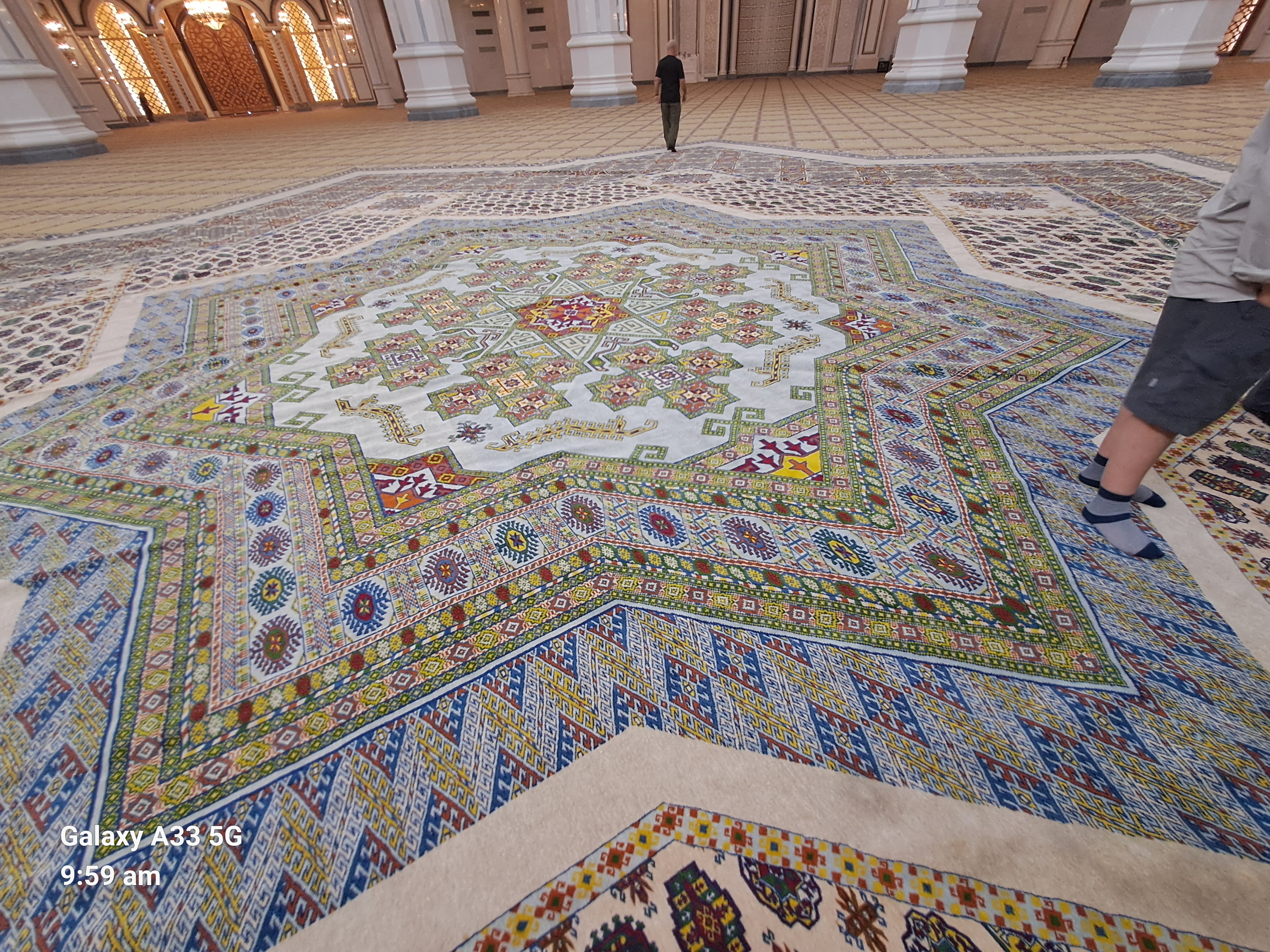
It seems the state and the religion are very intertwined, along with the 1st president’s book. I am not sure how true the practice of Islam is as a result.


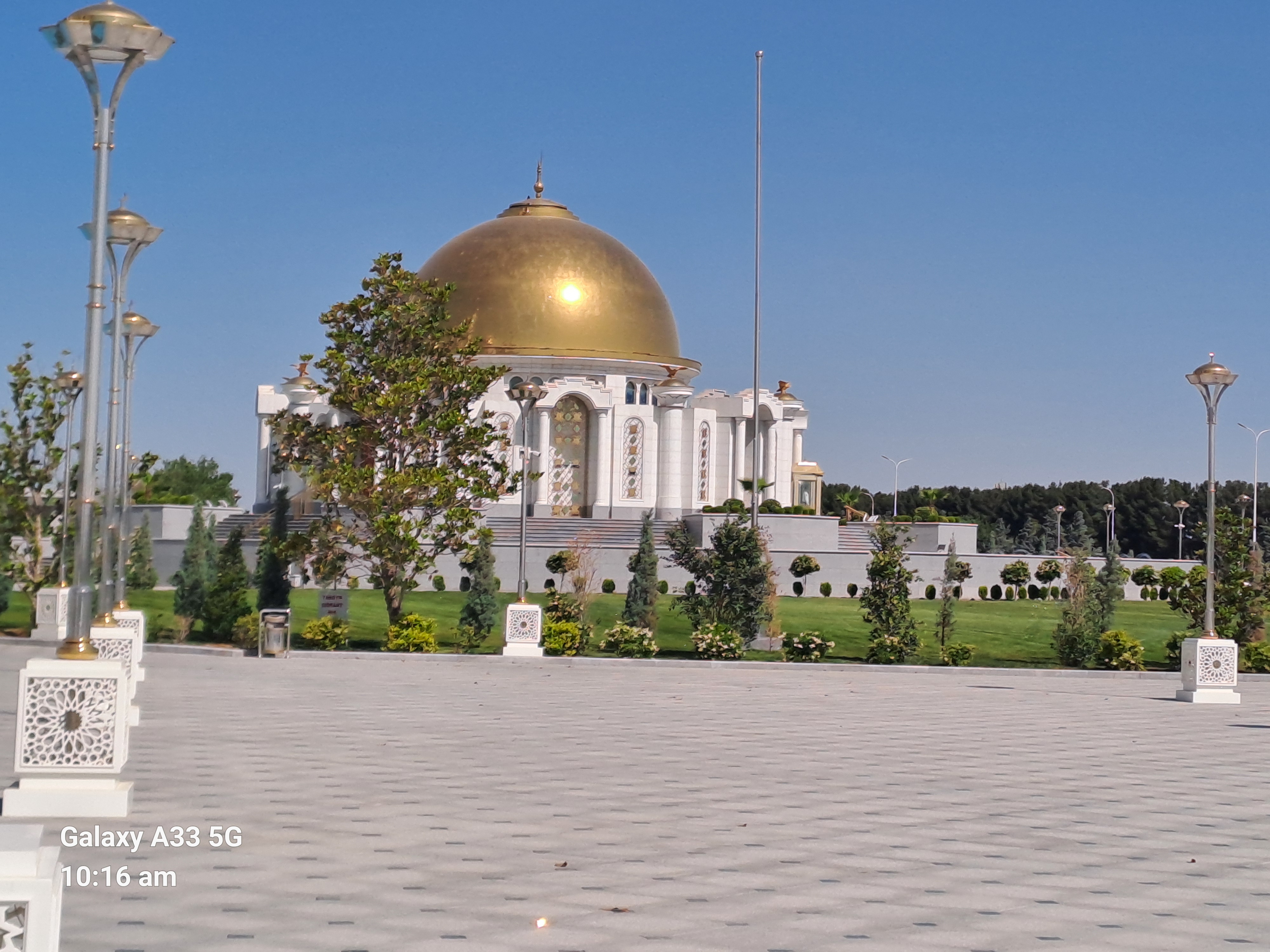
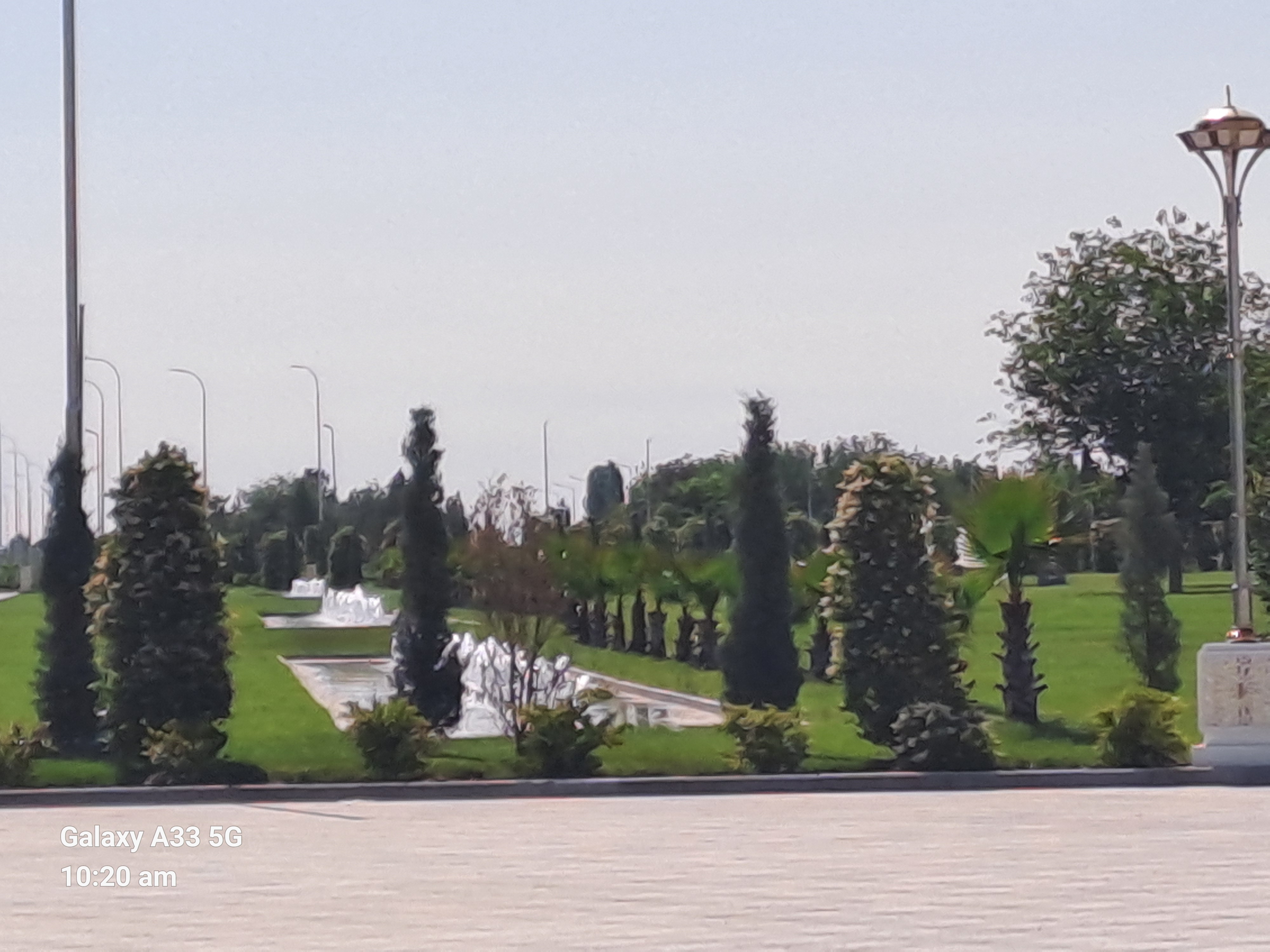
hjjk
Next we went to see the statue to the poet Magtymguly the most famous literary figure in Turkmen – Iranian history, also a spiritual leader and philosopher. He was born 300 years ago and we were told the anniversary was that week. Again every where was surrounded by greenery and fountains.
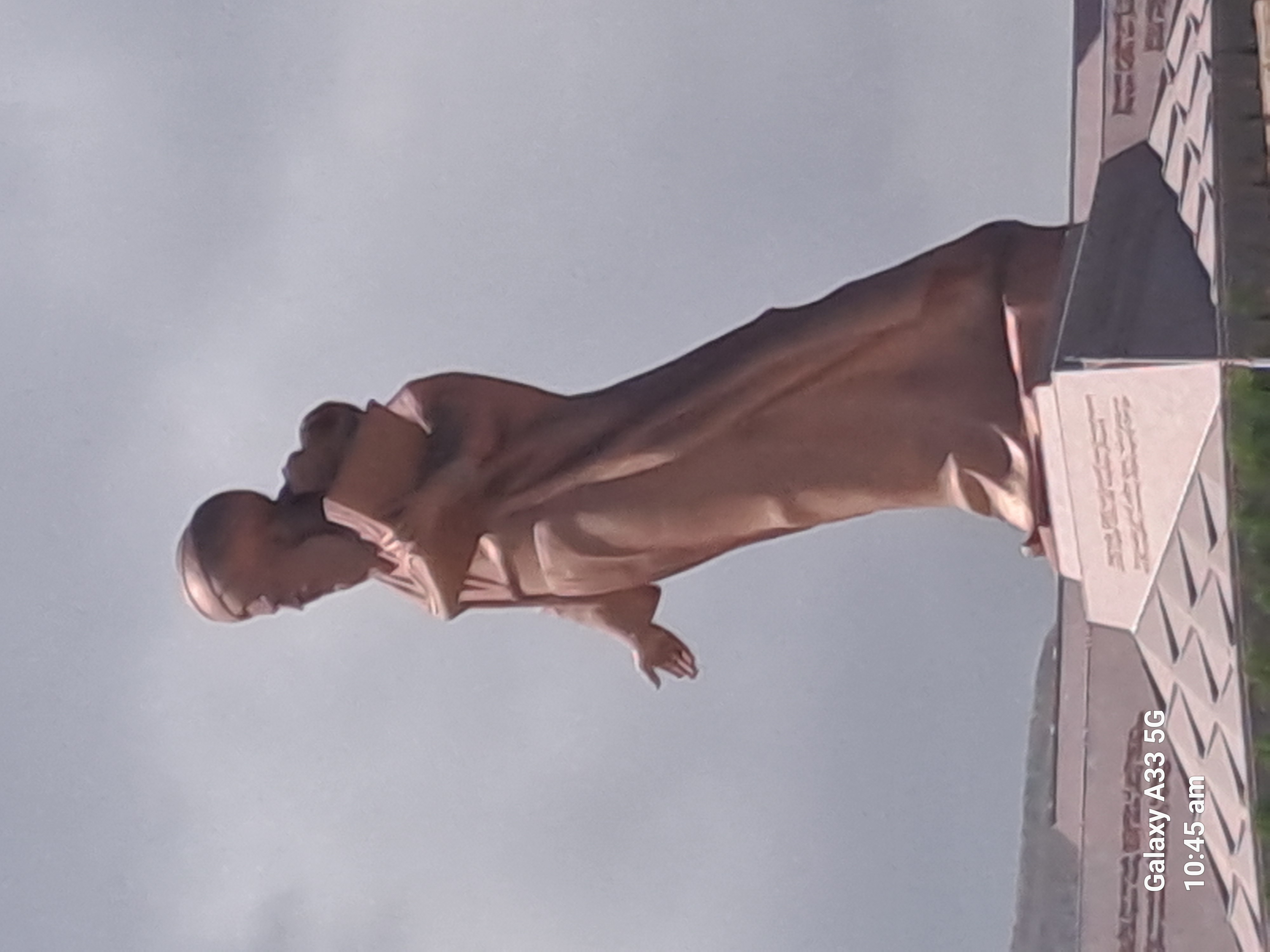
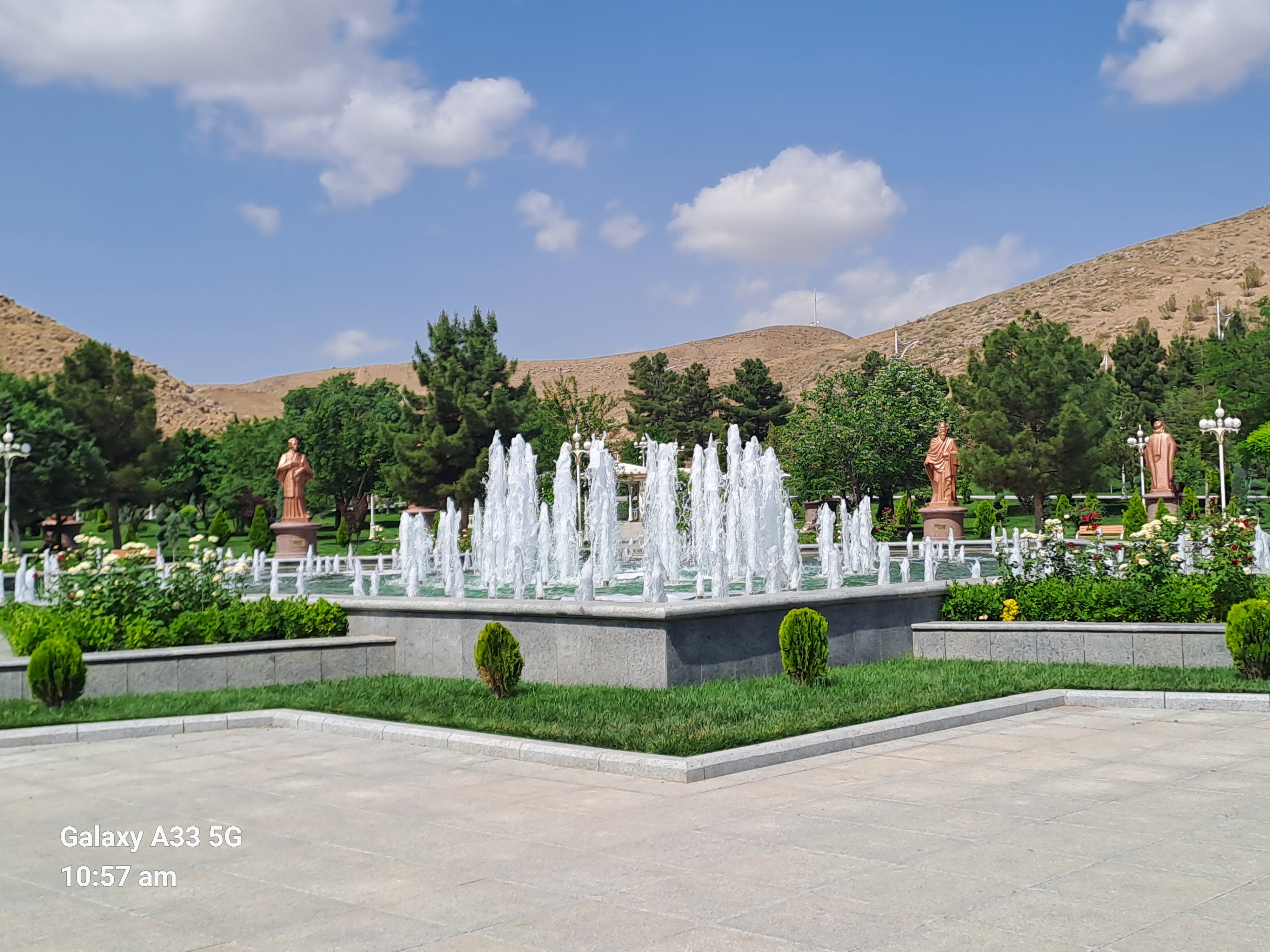
we were taken to see the poets park a park full of statues commemorating poets from all over the world. We met William Shakespeare there. We also saw a monument to the 1st president.
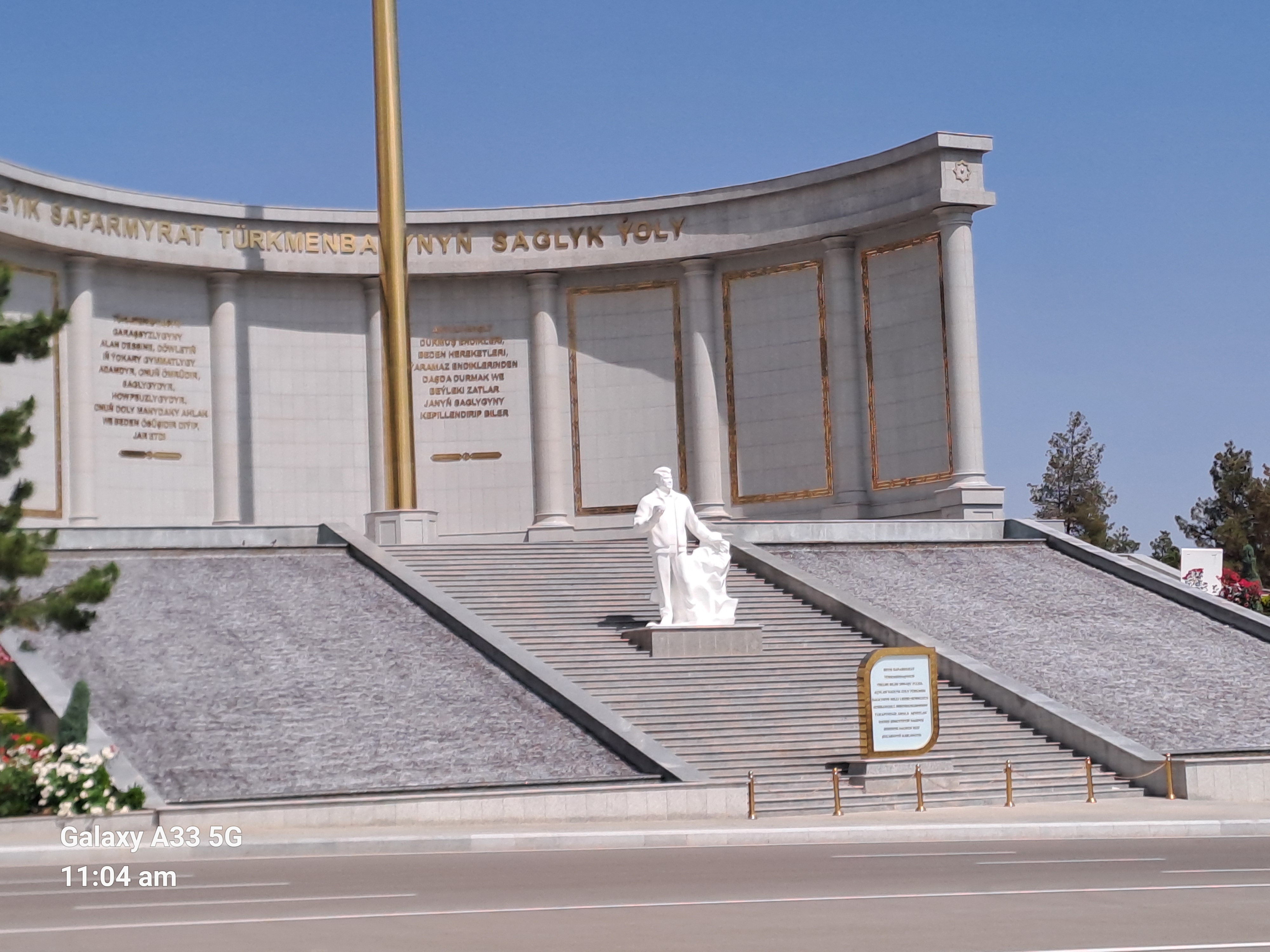
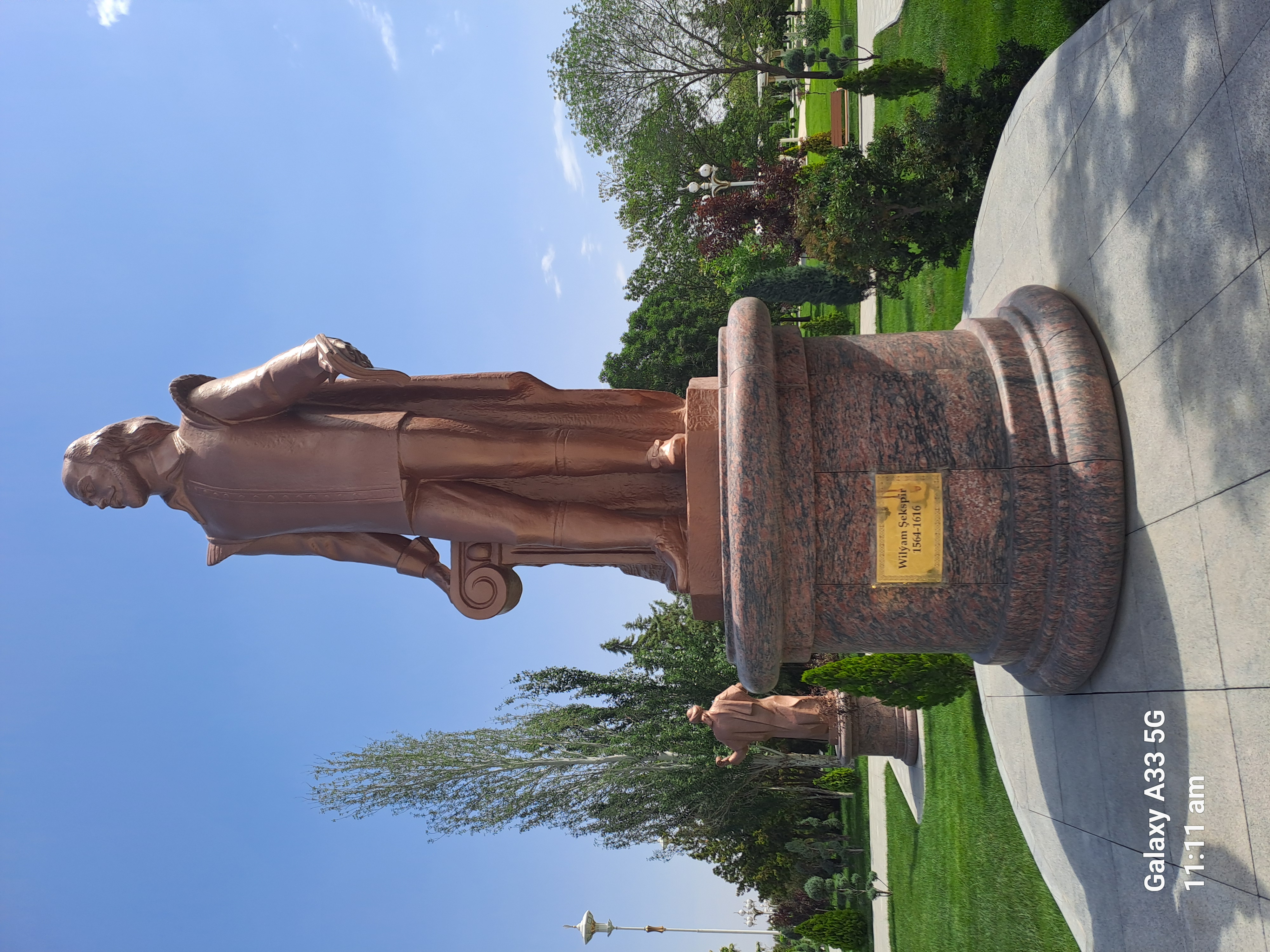
The next item was a ferris wheel, I think the emphasis was on the look of it rather than the experience riding it, as the layers of glass and framework did spoil the view The wheel wasn’t very busy, our guide had called ahead to check it was open and they started it for us all to have a ride. It was peaceful on the ride and we were tempted to stay on for another go.
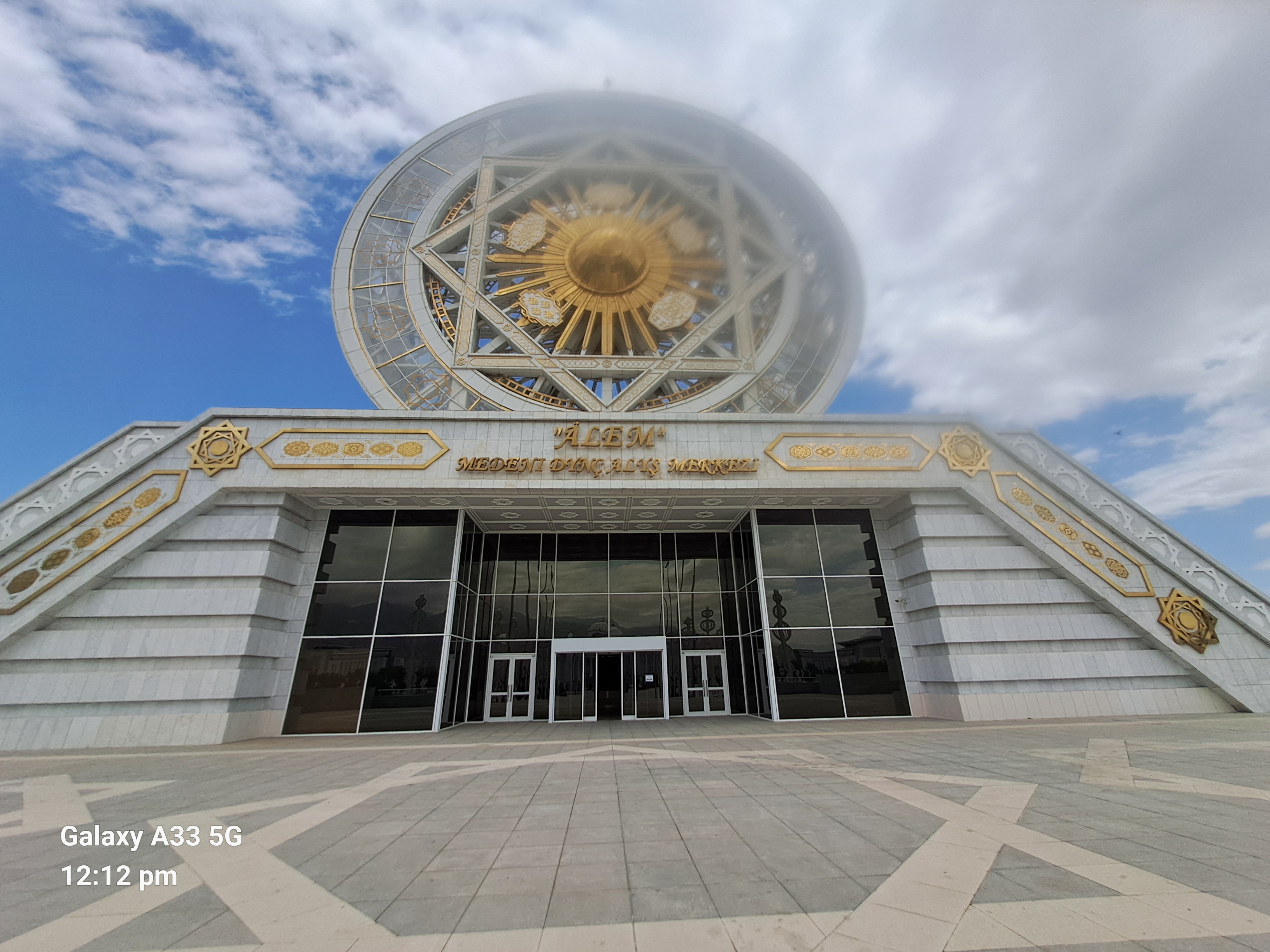
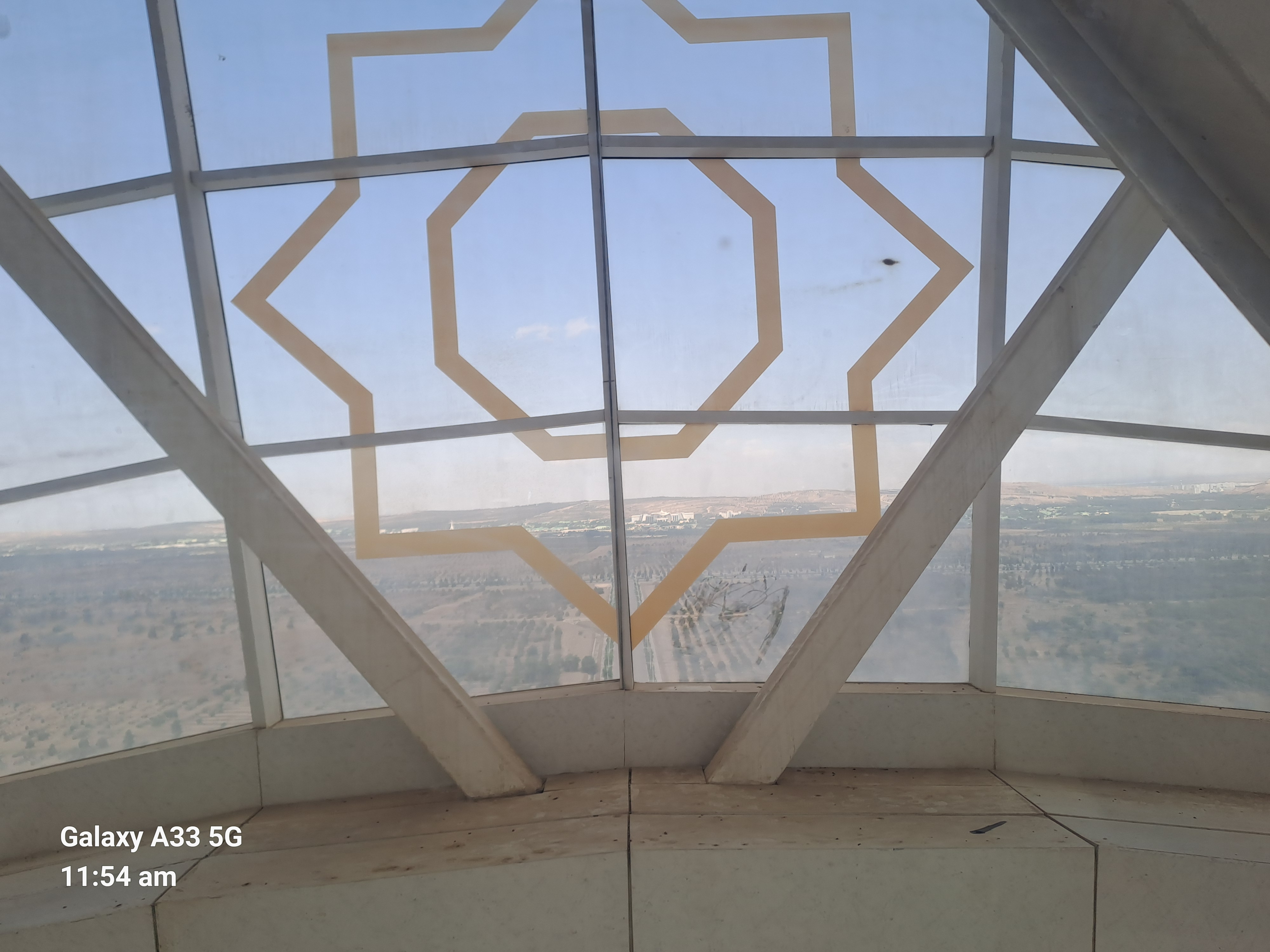
Like other countries there is an independence memorial for 1991. This is guarded by various fierce looking statues.
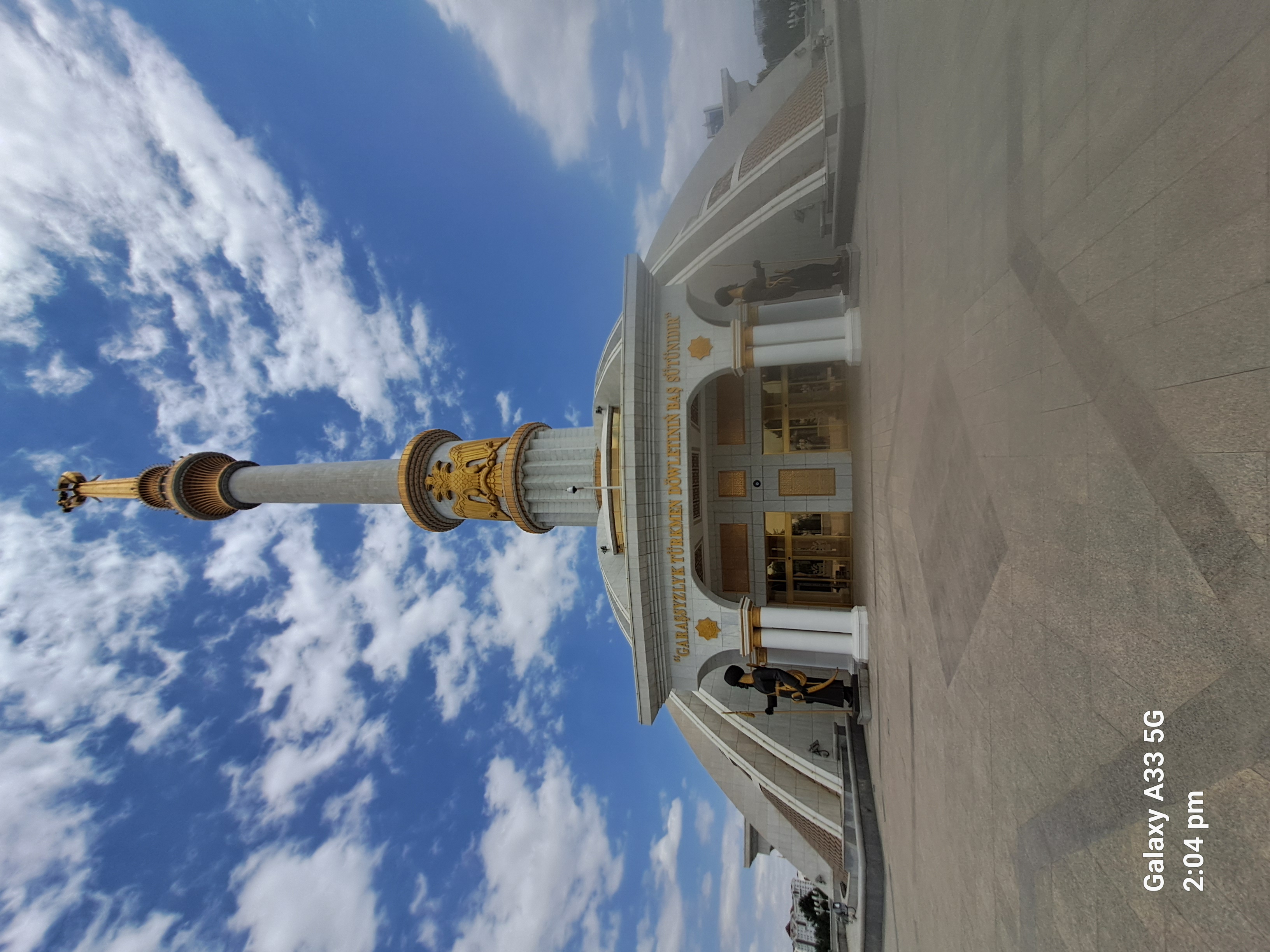
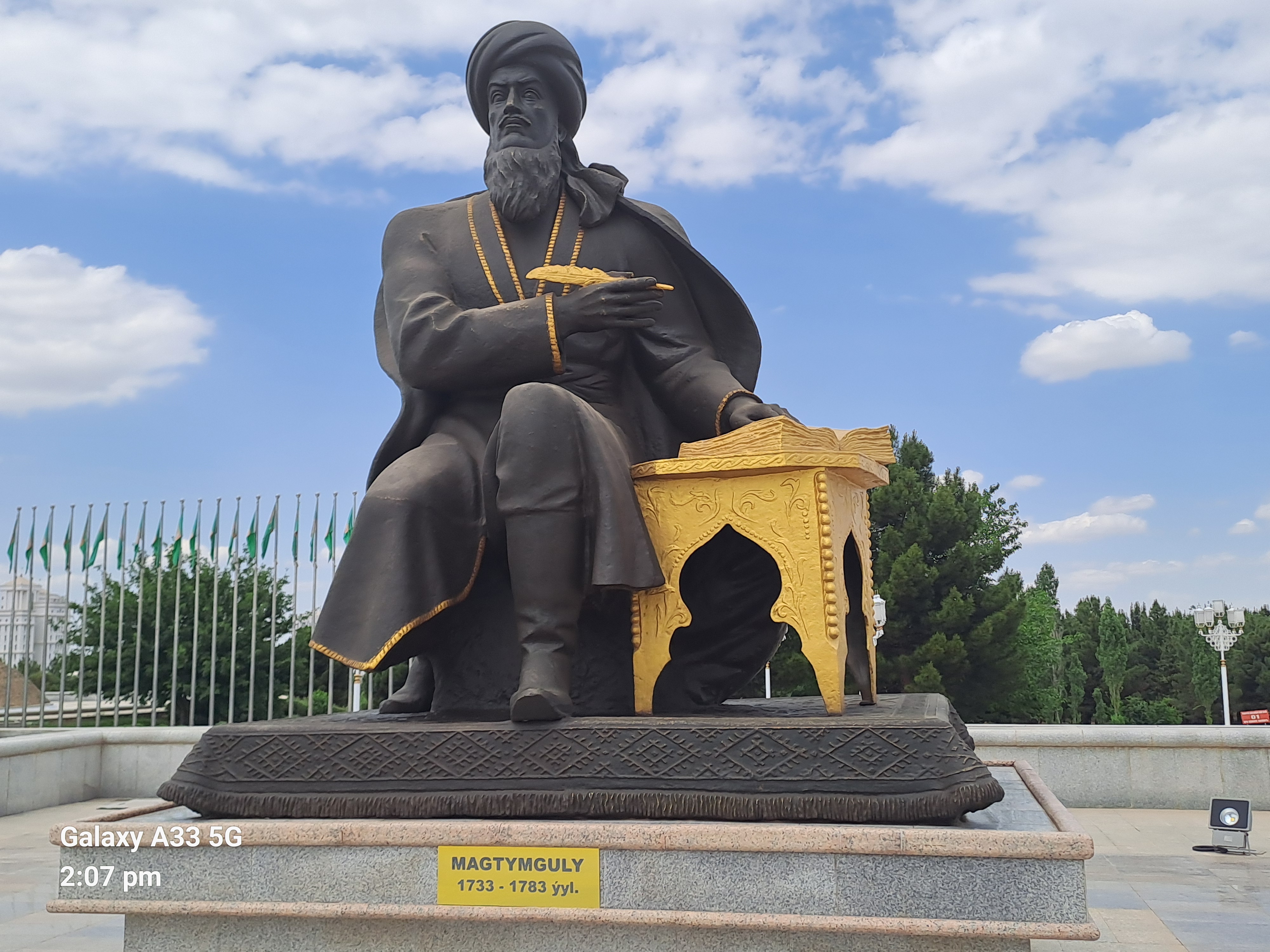
Nearby is a statue of the first president and his book. Apparently the book statue used to open and show things but isn’t working at present. The book is a work on how to live apparently it is partly prophetic partly story, poem, information etc. This used to be taught in school and was essential for such things as the driving test. It was considered second to the Koran
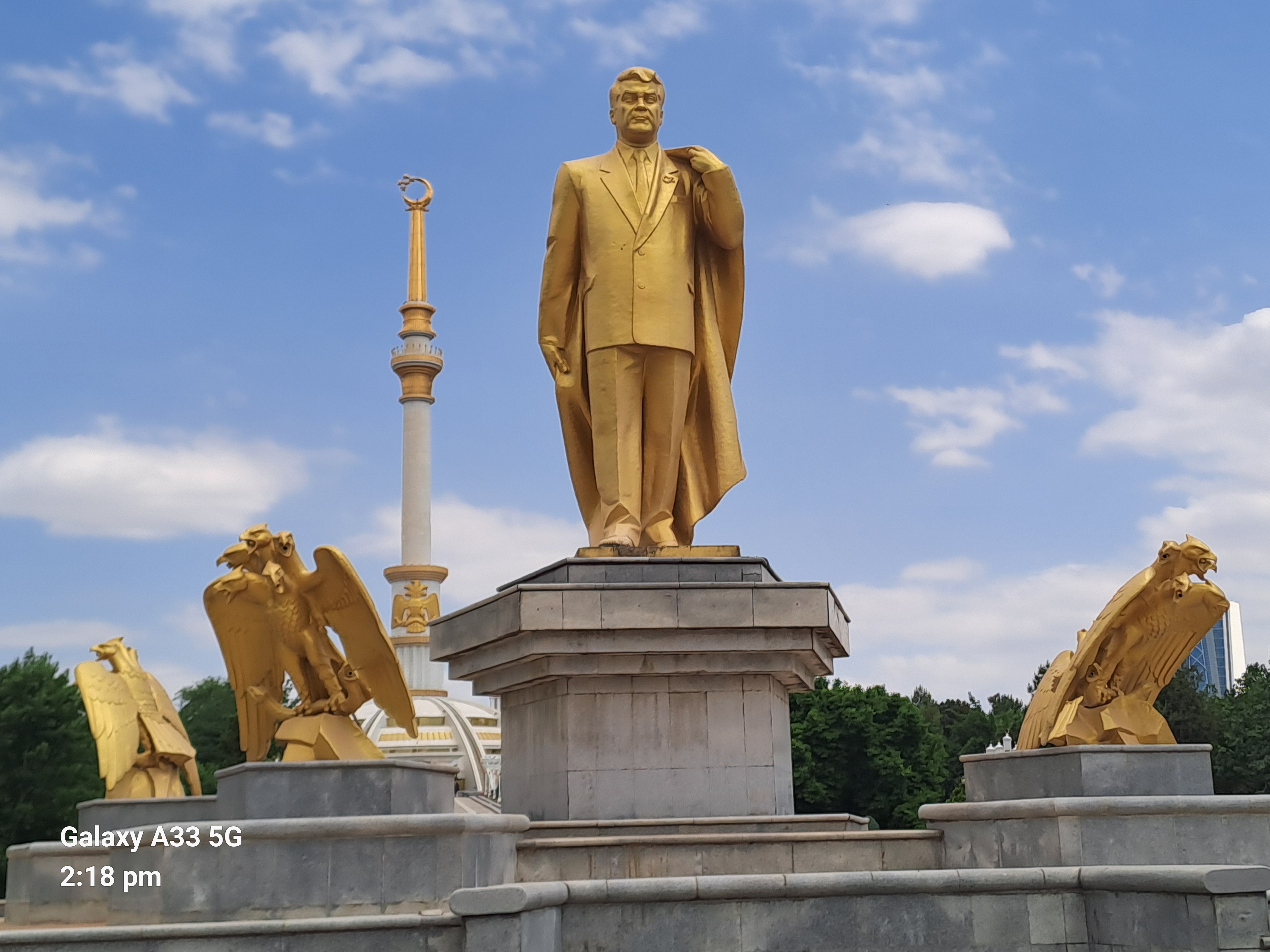
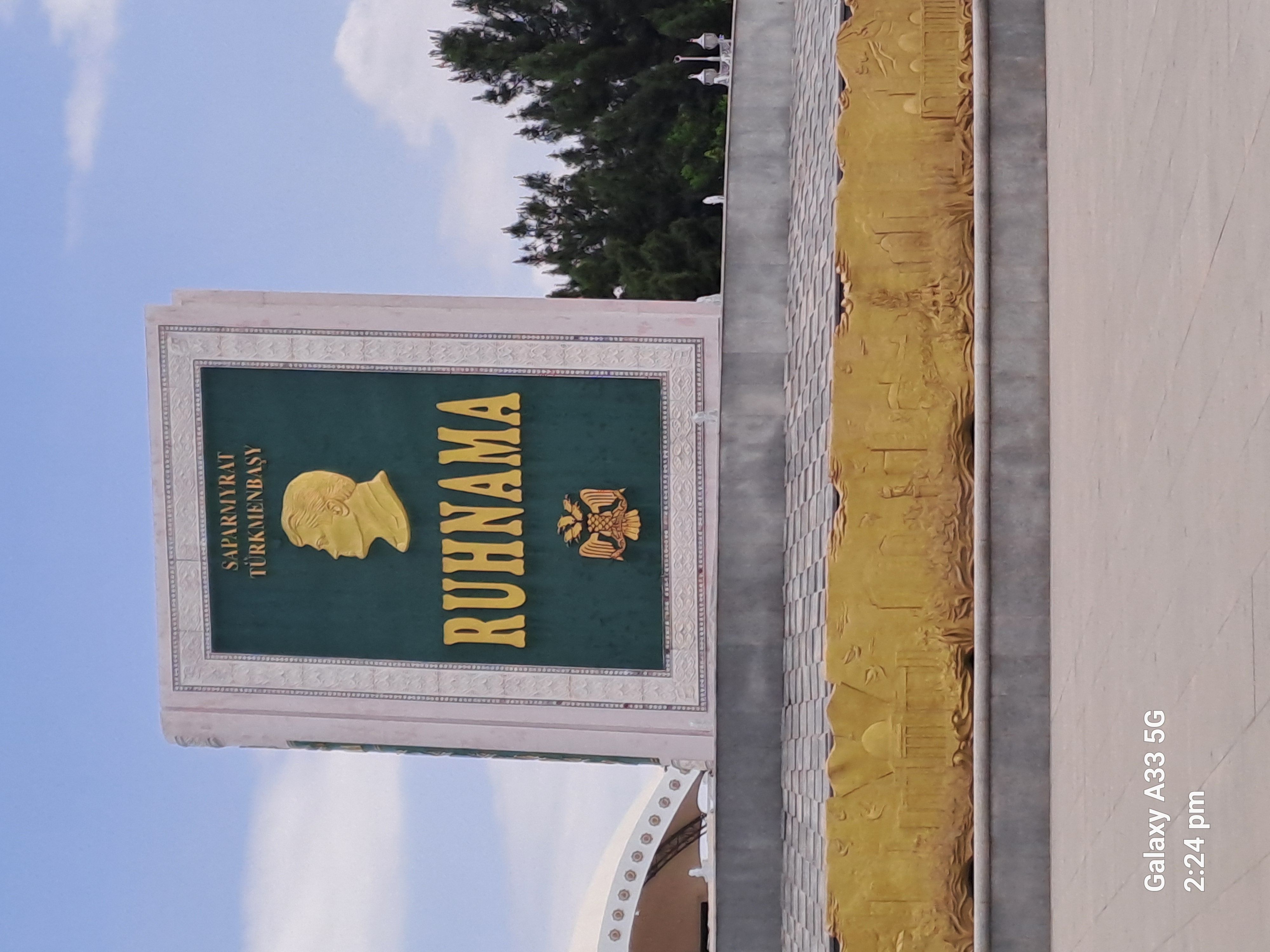
We also got taken to the wedding venue with 6 wedding suits and reception areas with the largest for 10000. The was a statue to the national dog a working dog with trimmed ear and tail to protect it from attack by wild animals.
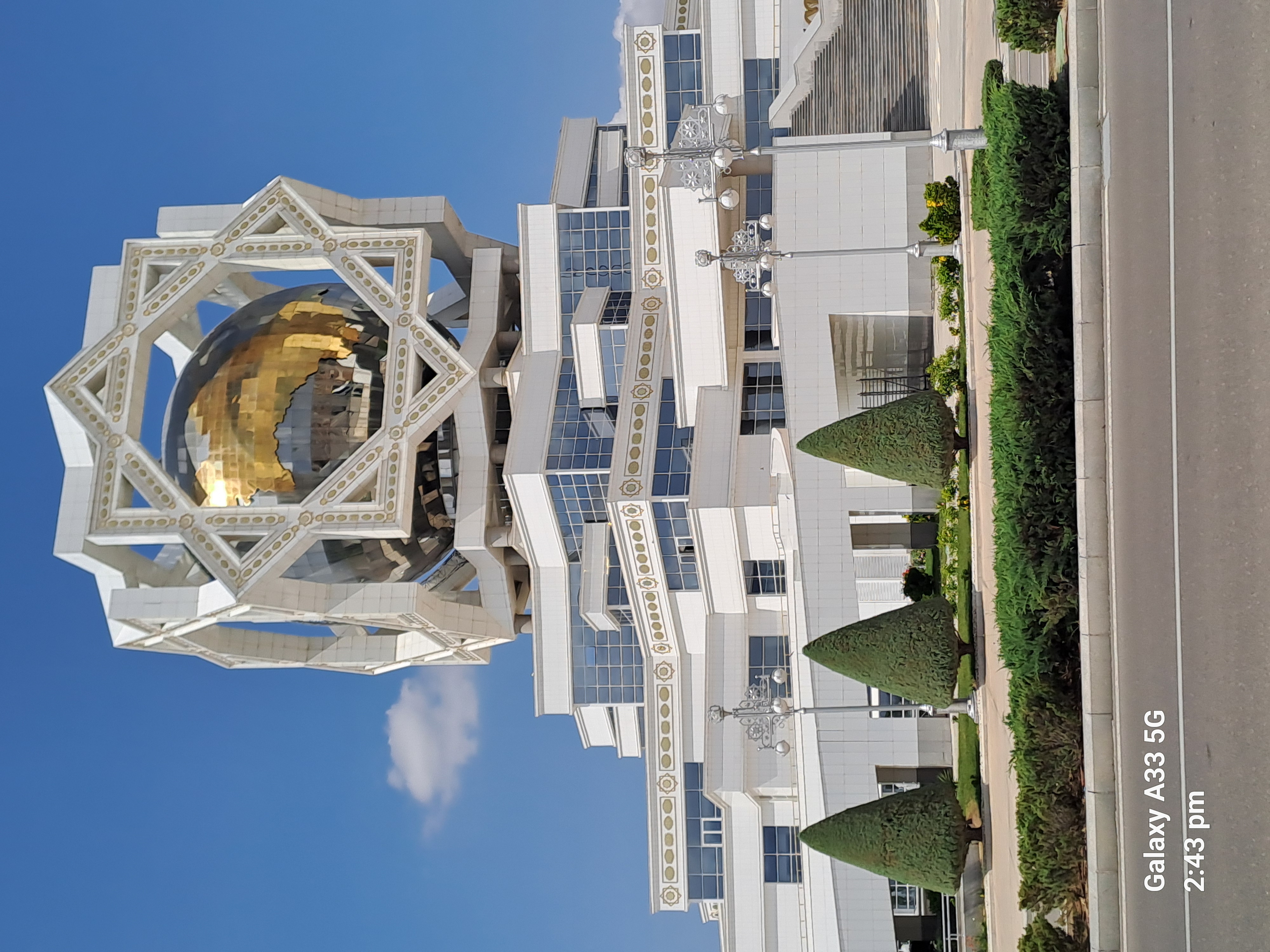

We requested a visit to a Russian orthodox church that was nearby. It was a surprise as we thought there were concerns about bibles being brought into the country. The church looks to be in current use and has a Sunday school. One of my fellow travellers pointed out how God is represented in the icons by the angels who visited Abraham. These three can be seen as Father Son and Holy Spirit.
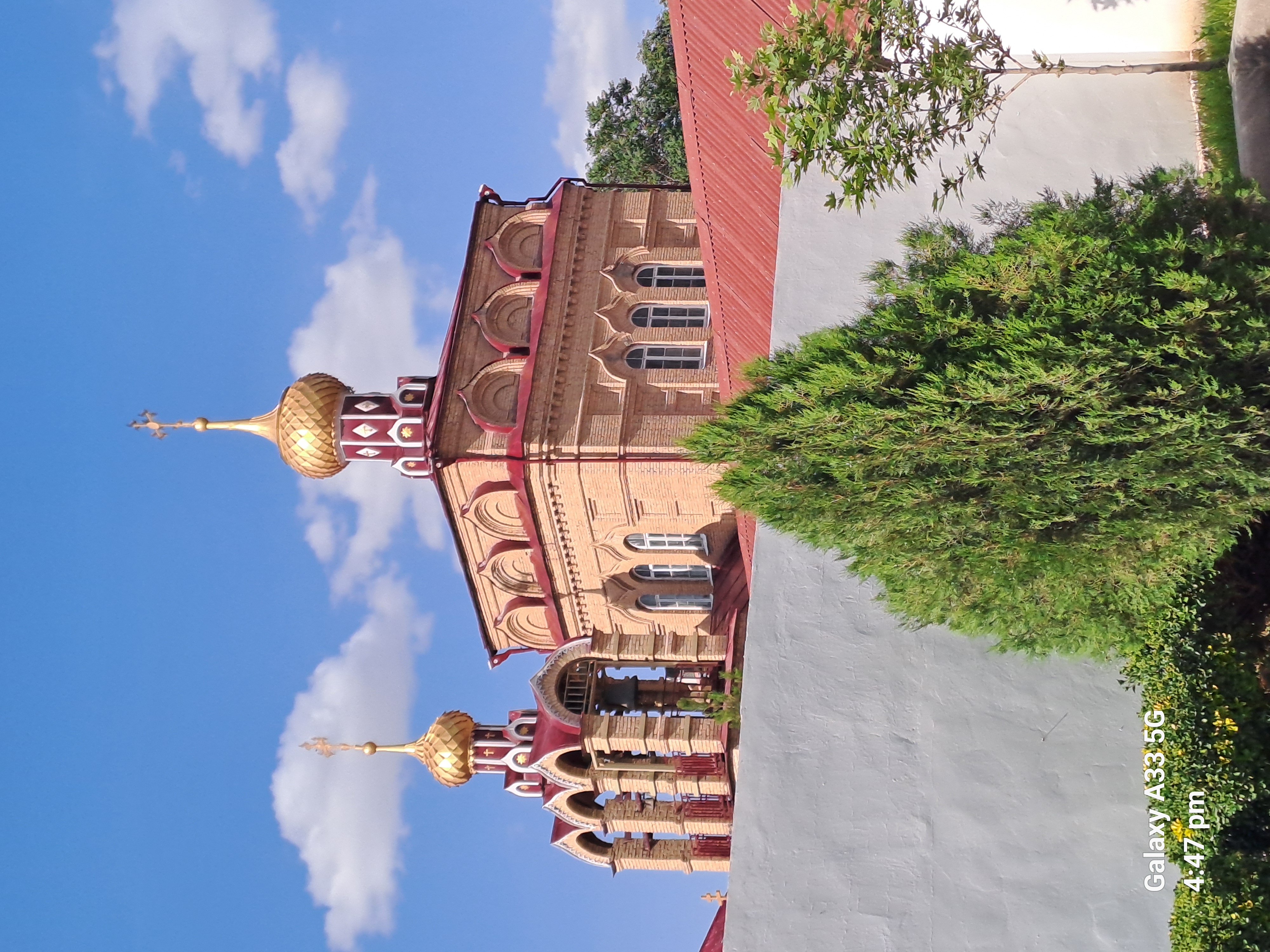
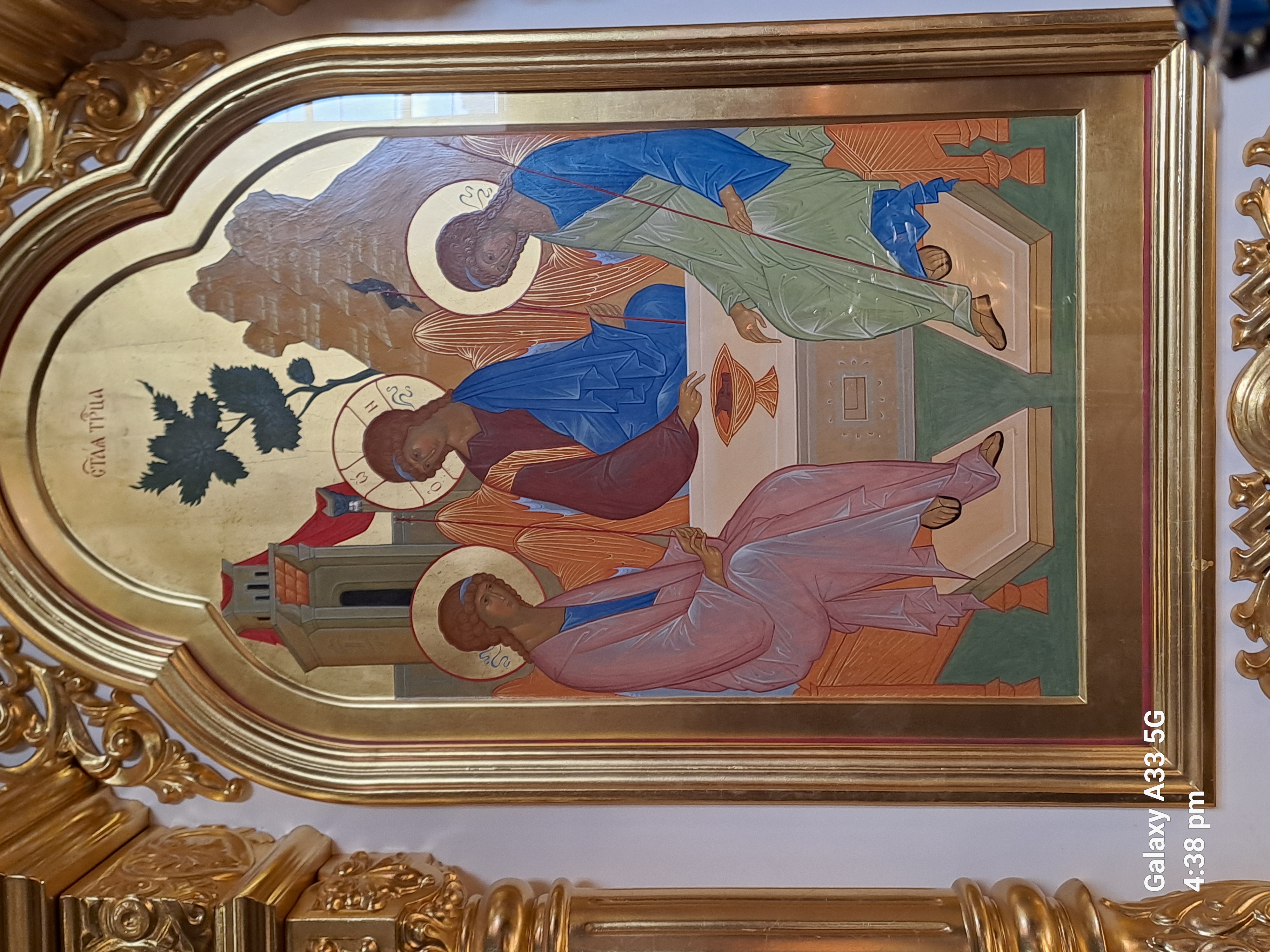
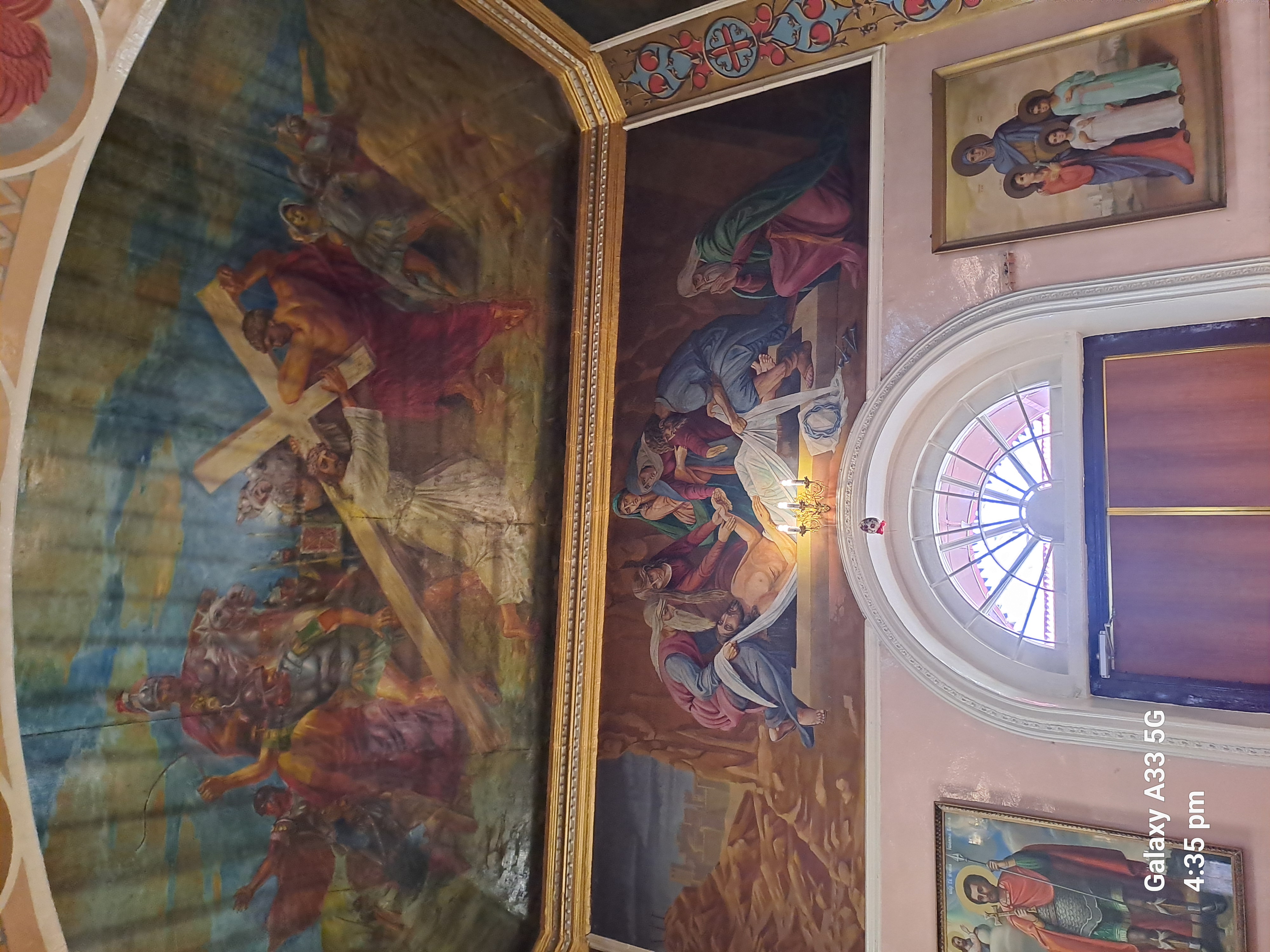
After we left Ashgabat we saw a very different view of the country. It is mainly desert and the long road that we followed through to the border was in very poor repair. Progress was very slow with the truck zigzagging from side to side to avoid potholes and also swapping carriageway – maybe over rating the road here.. One road was the original soviet potholed track and the other often at a different level more like a mud track. What was already a long drive day became a few hours longer and we finally arrived at the gas crater just about sunset.
The gas crater was the site of a mining accident, the ground collapsed and gas escaped, as this was poisonous it was decided to light it and let it burn its self out. This was over 50 years ago. The flames have apparently reduced in size over the last few years as you didn’t used to be able to get near the crater due to the heat.. It is possible it will burn out in the next few years. We met a group of Russians who were also there. Our guide was able to talk to them. They spread out around the crater at sunset and sang a national song for VE day. A reminder for me about how alliances change over time.
Unfortunately for me this was my turn for cook group so I had to “steal” time to nip over to the crater for sunset photos in the middle of cooking. The visit was just cook, camp and leave. Also due to the wide open ground a very long walk for a “bush pee”.
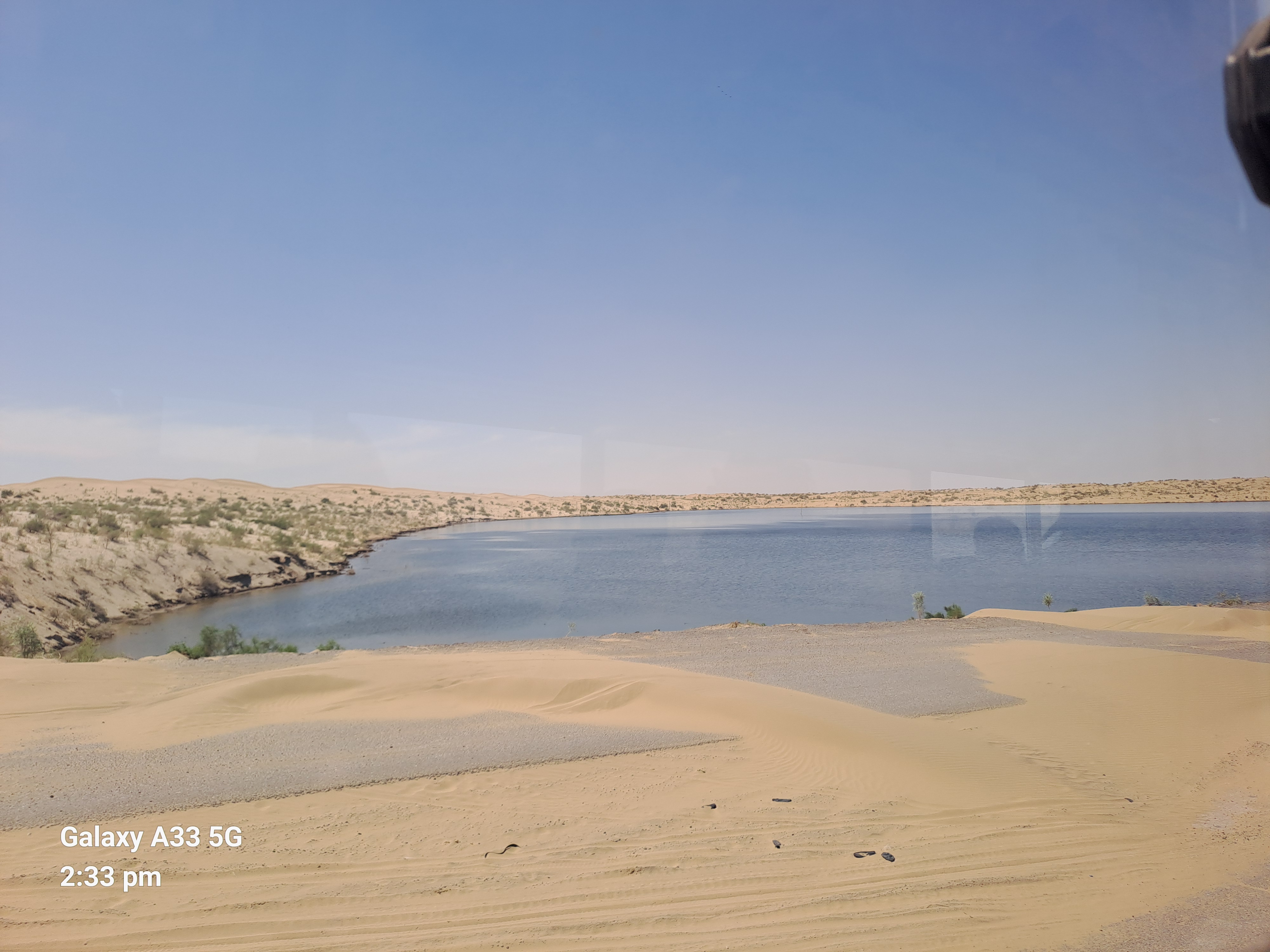
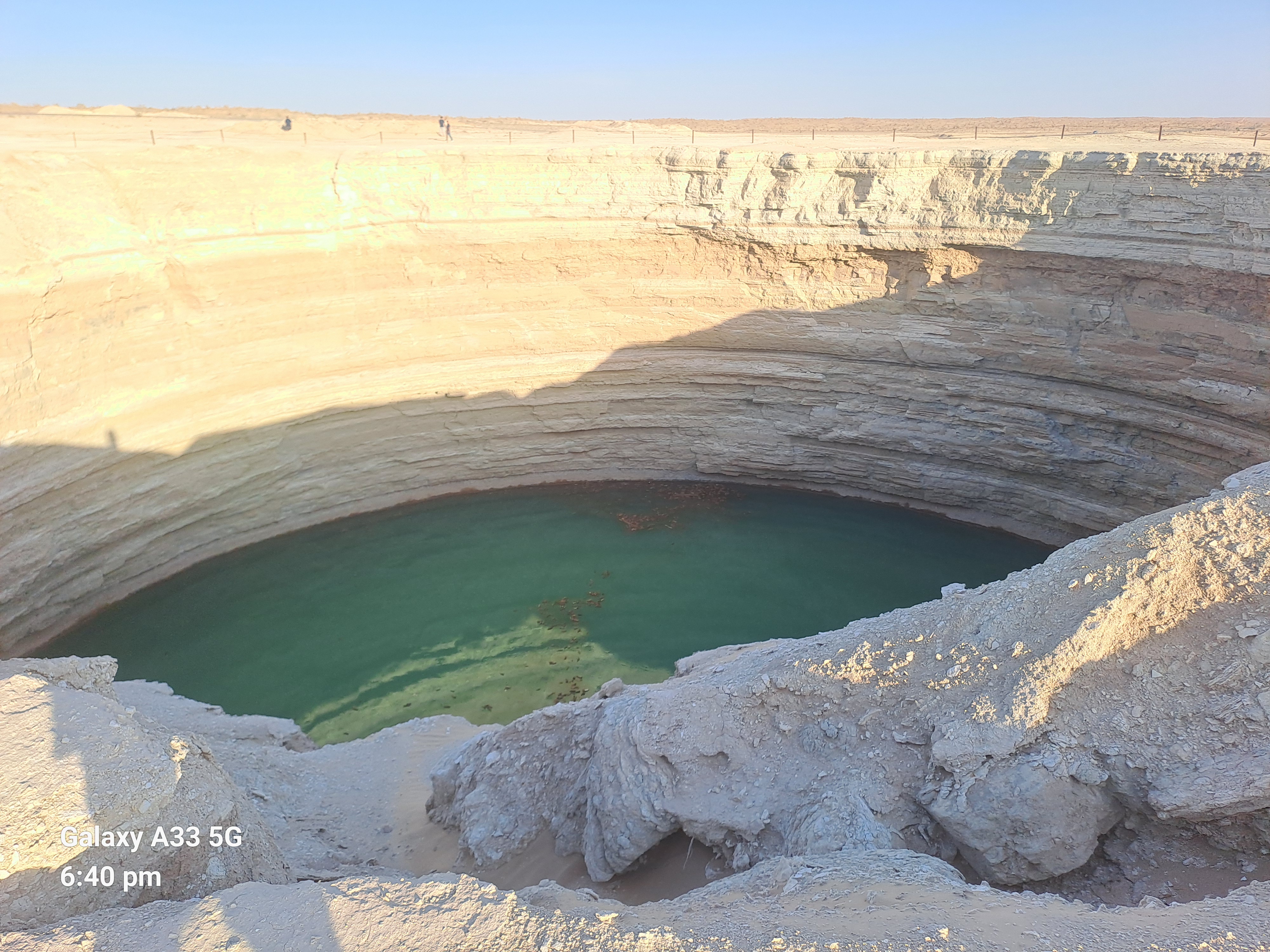
hjk
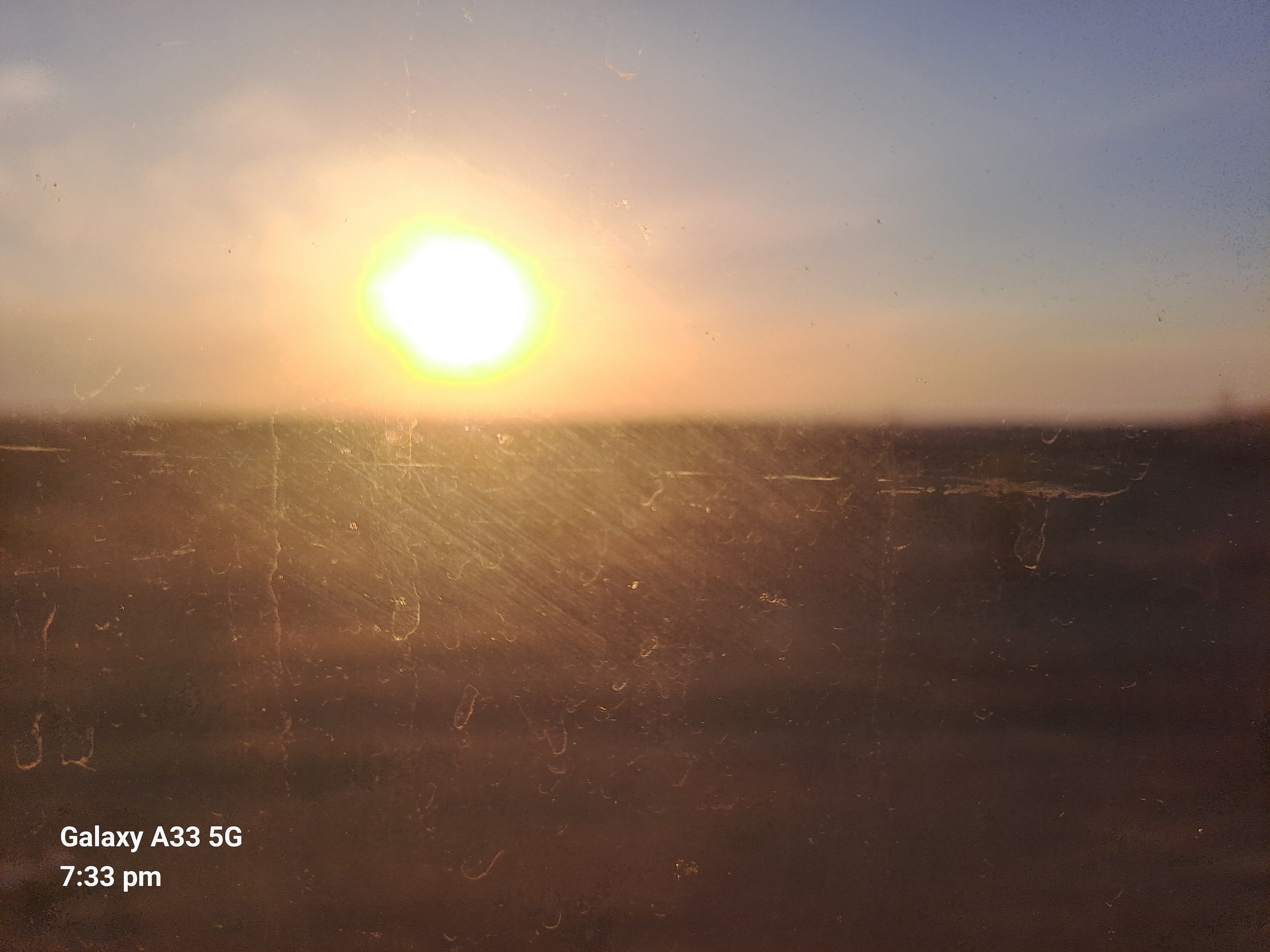

hjk
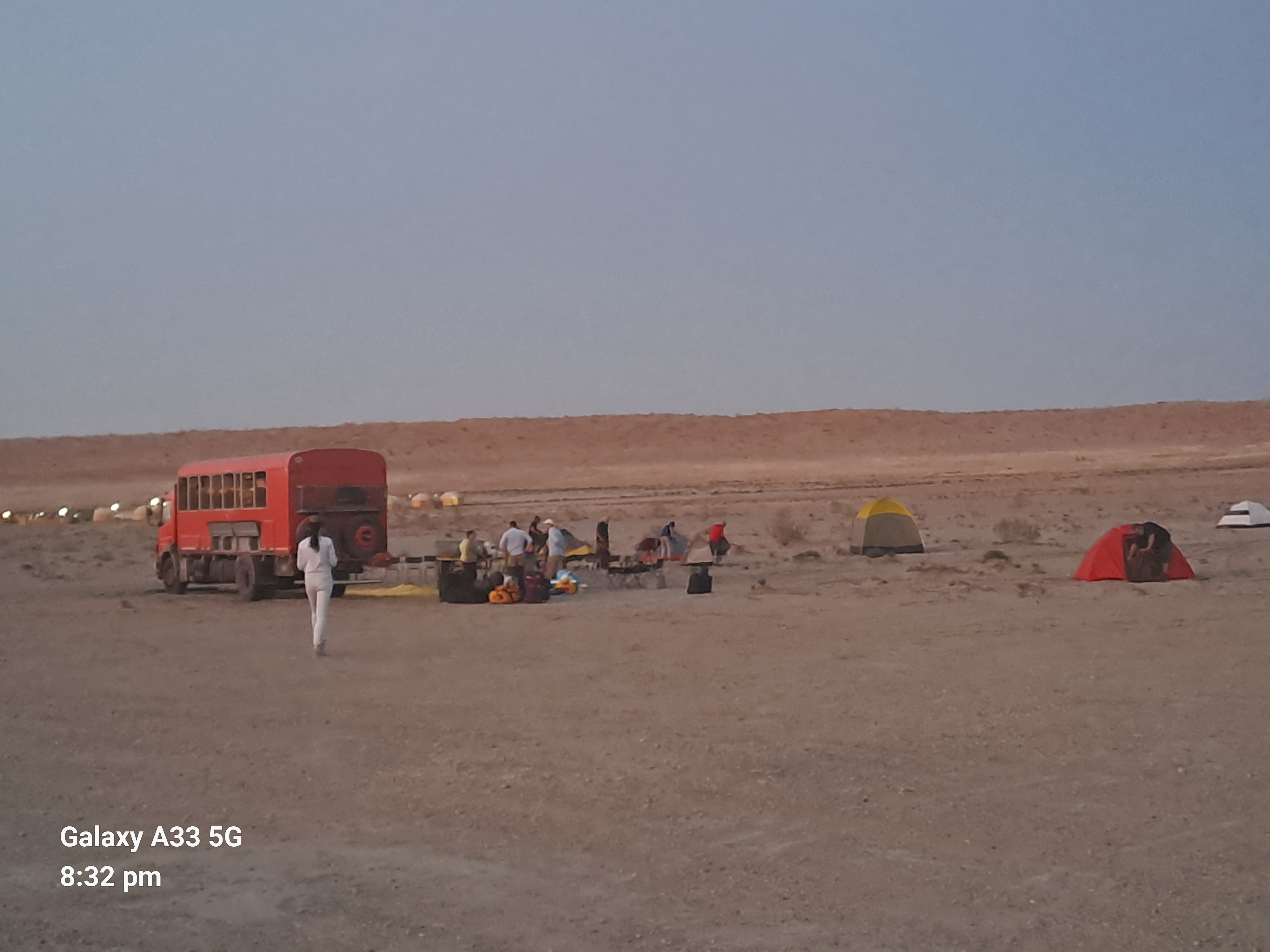
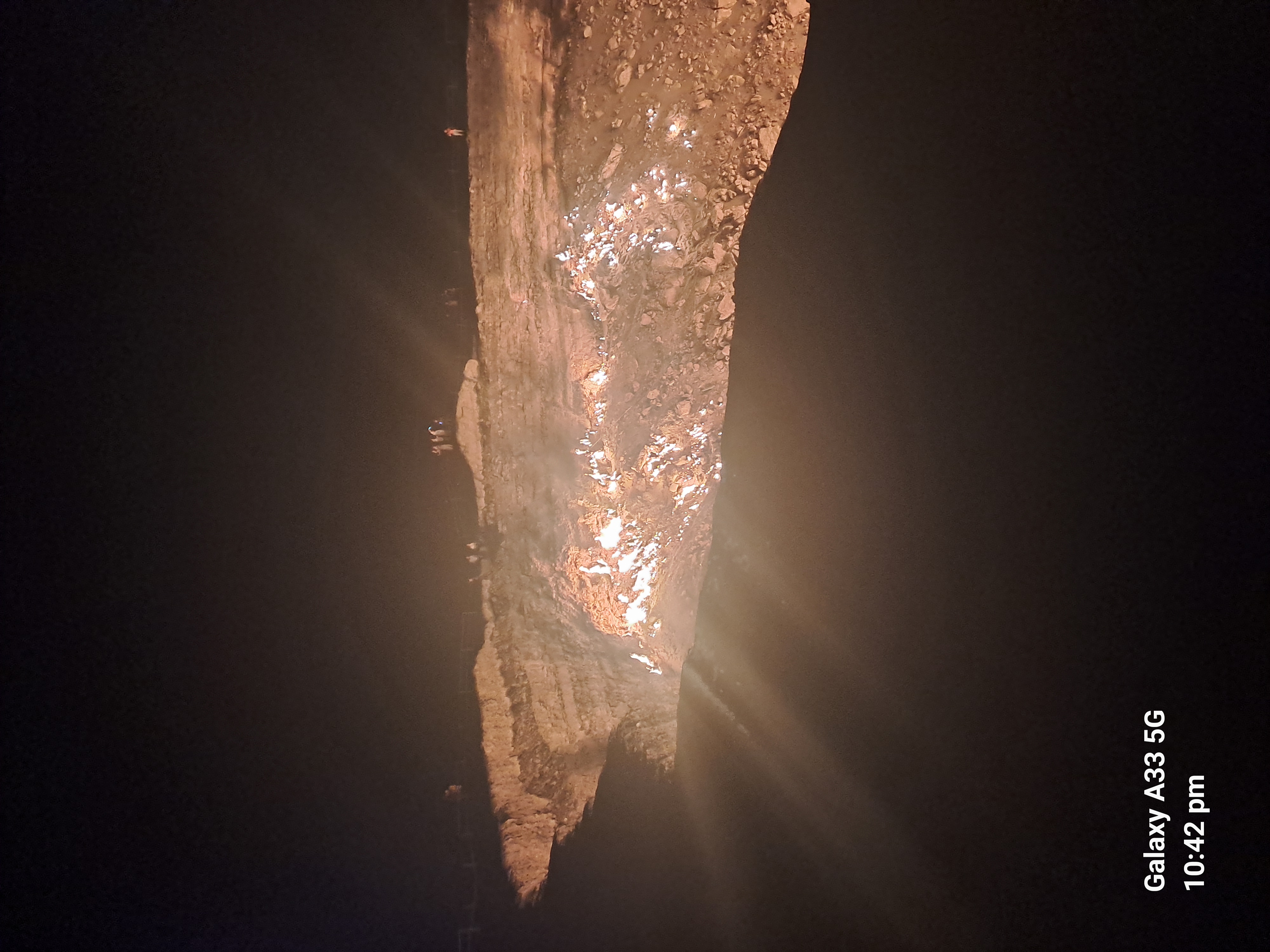

After the gas crater we has another long days drive with no improvement in the state of the roads, and another bush camp near the border. Thankfully this has a bit more cover around it.
Our last visit before the border was to see some ruins and ancient mausoleums.. There was a town dating from the 1st and 2nd century and destroyed by Genghis Khan in the 13th century when he killed all the inhabitants. Only certain elements were saved if he had a purpose for them. The large tower was built in the 11th and 12th century and used as a light house. This was a feature of many of the towns on the silk road as the light guided caravans across the desert to the trading towns. Genghis Khan repurposed them a watch towers. The town was abandoned from the 14th to the 19th century. Some of the mausoleums have been restored and are for the kings prior to Genghis Khan.

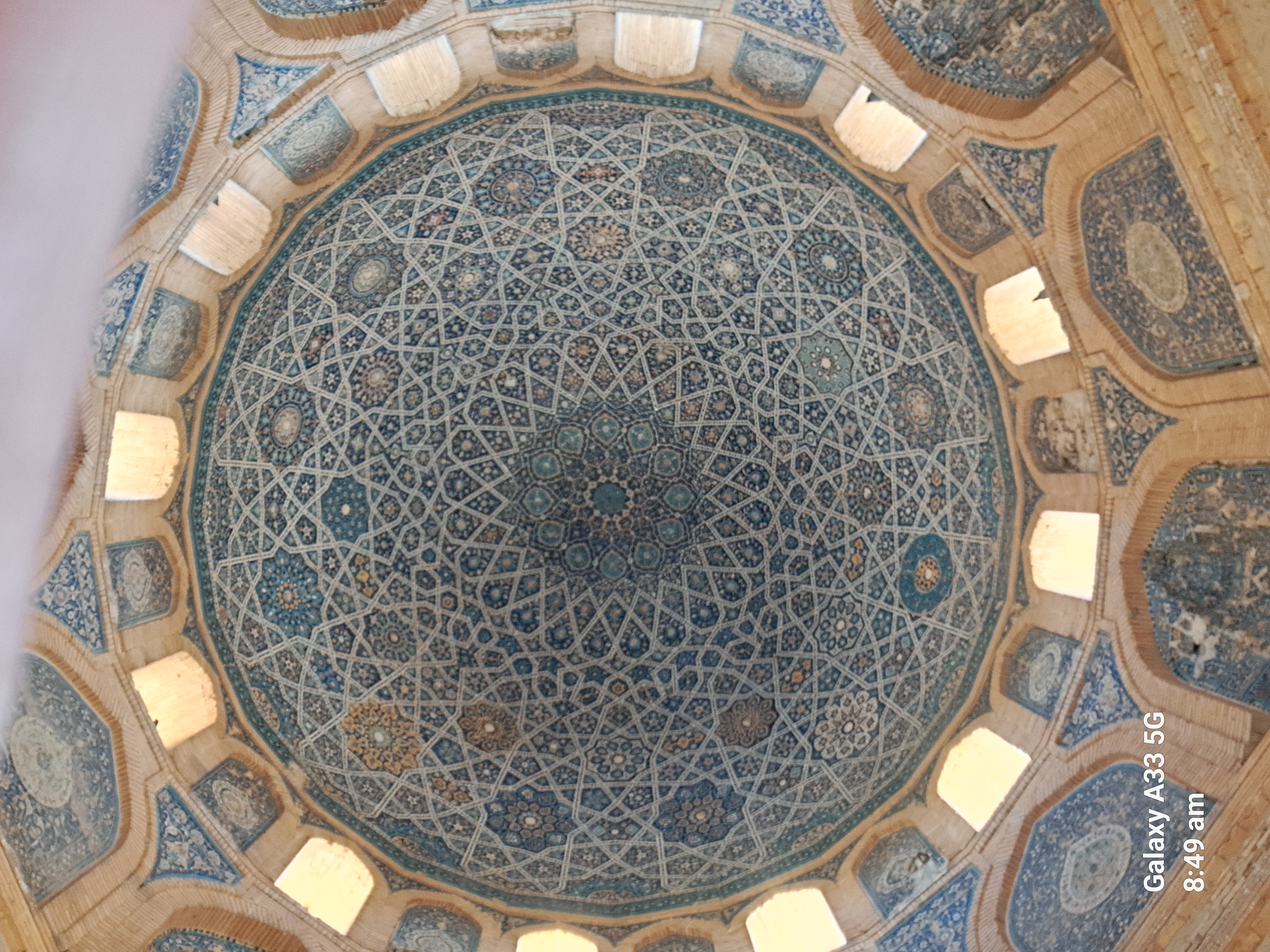
kjjh
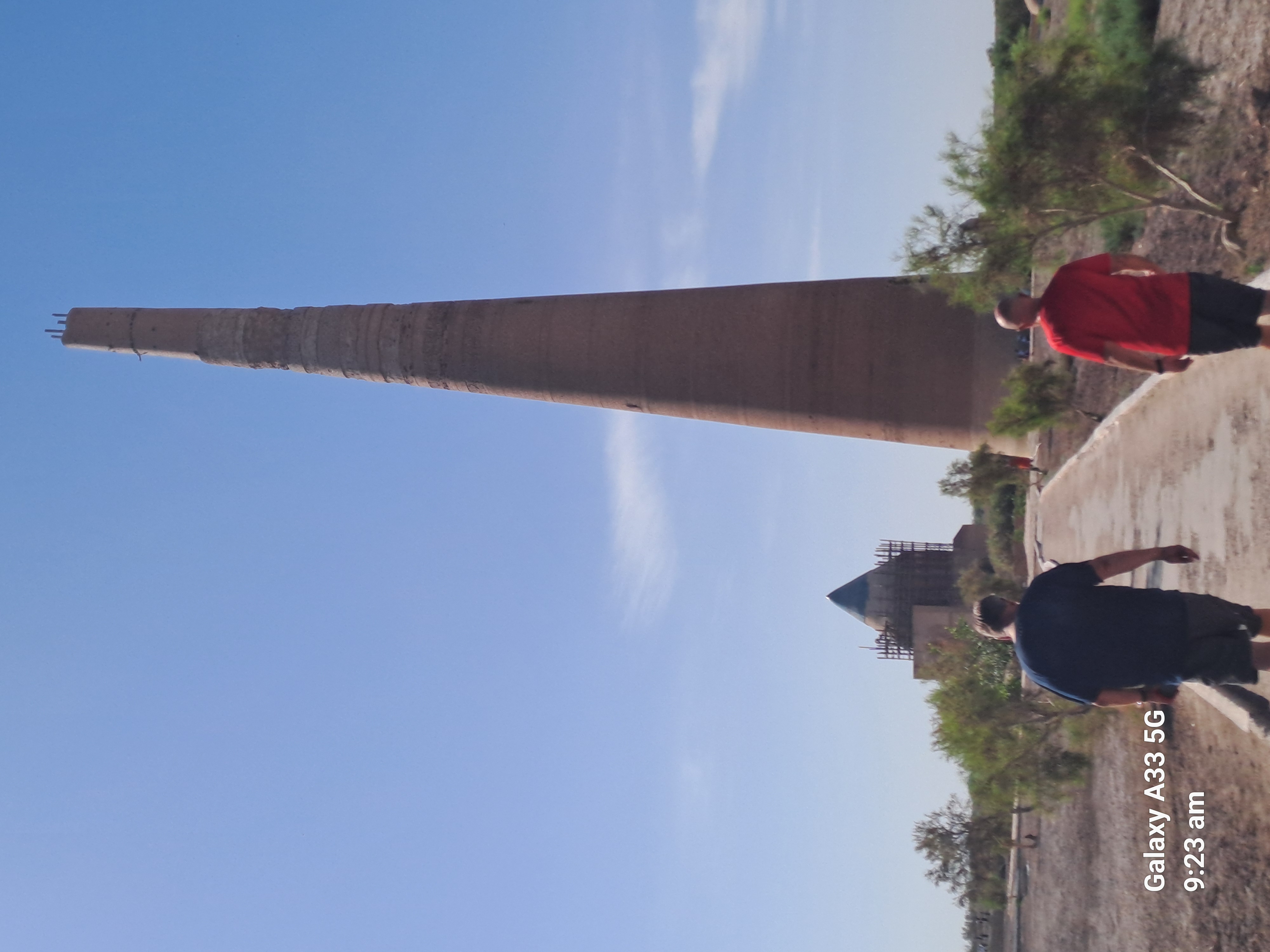
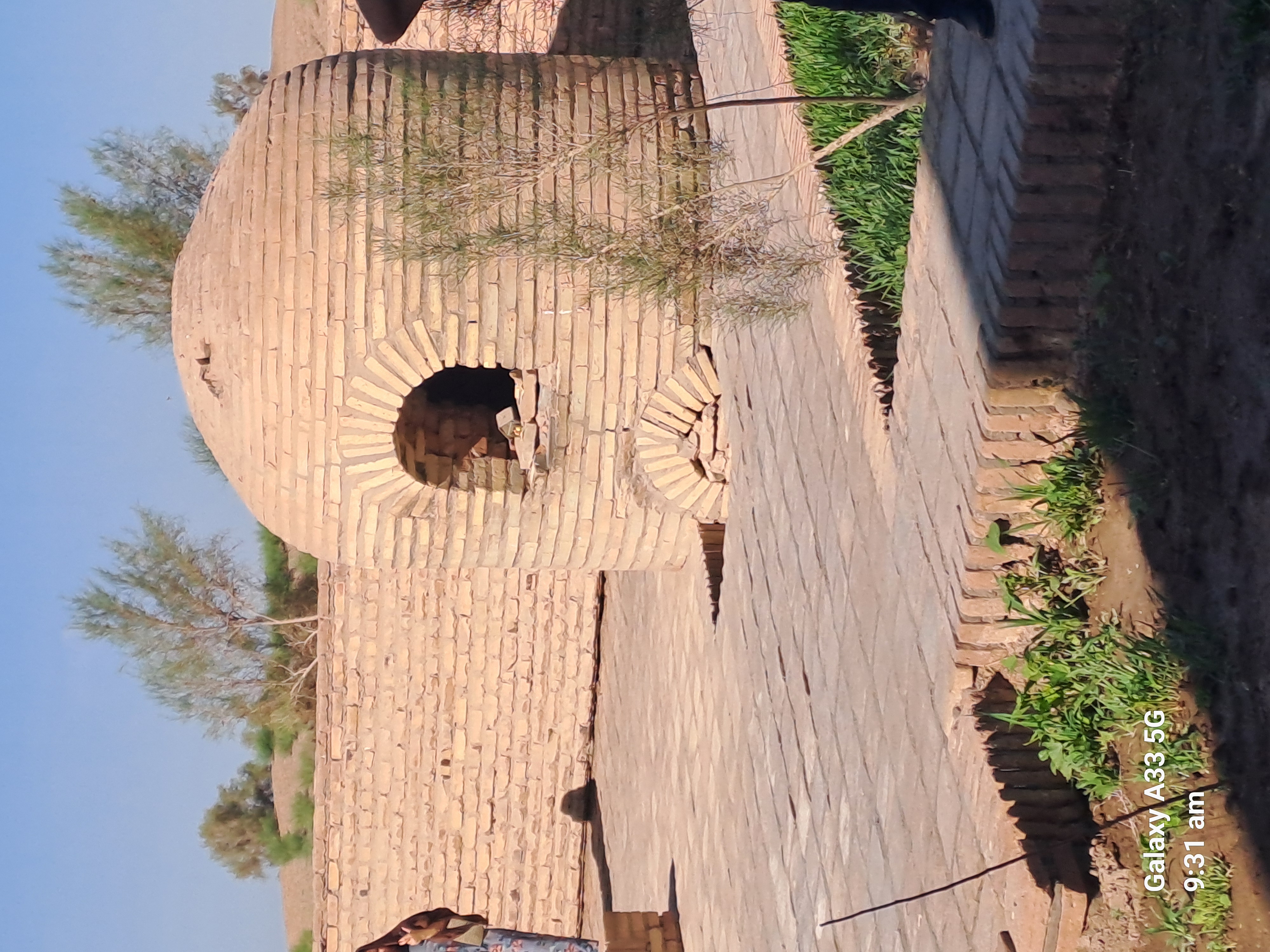
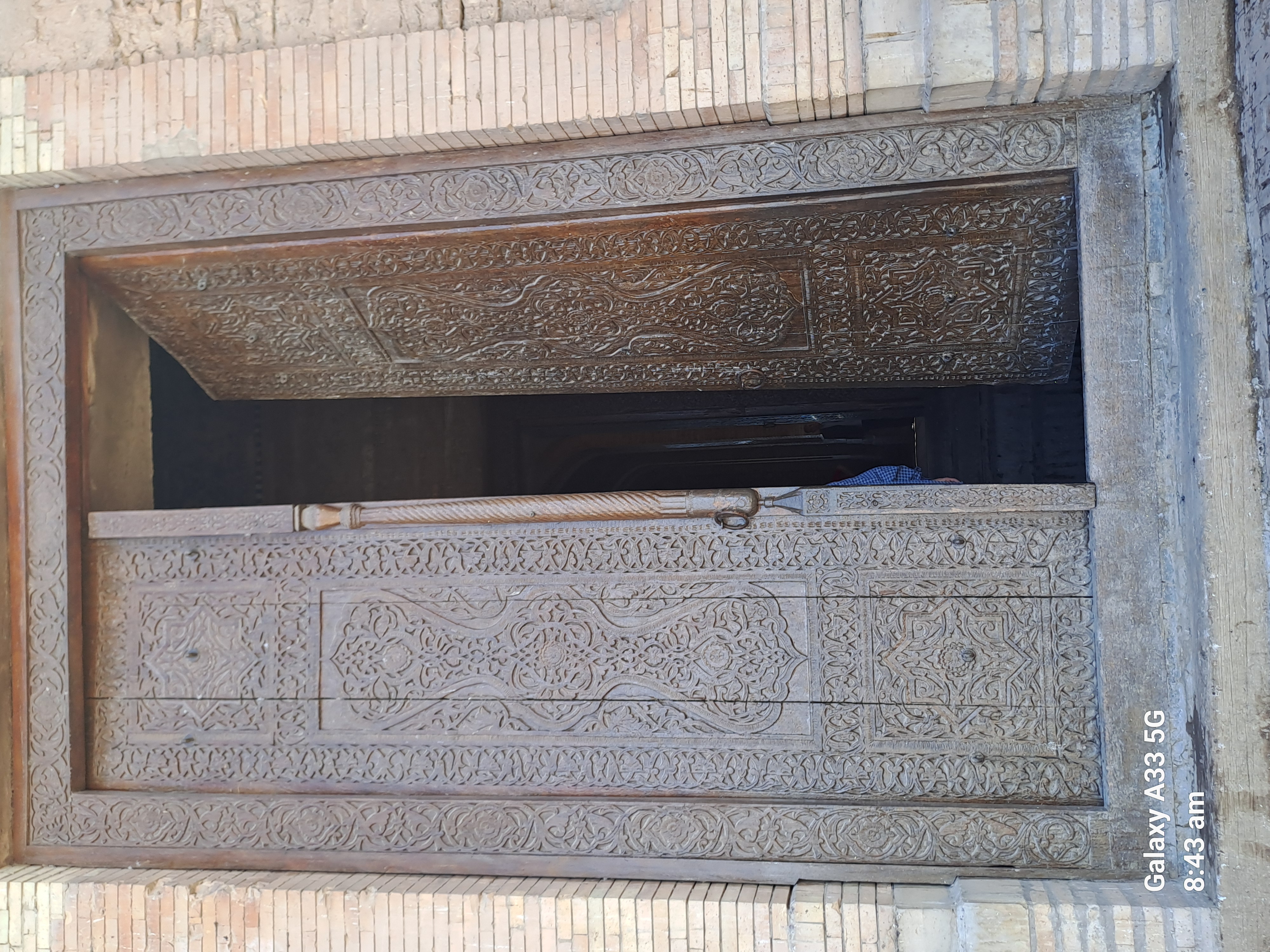
hjk
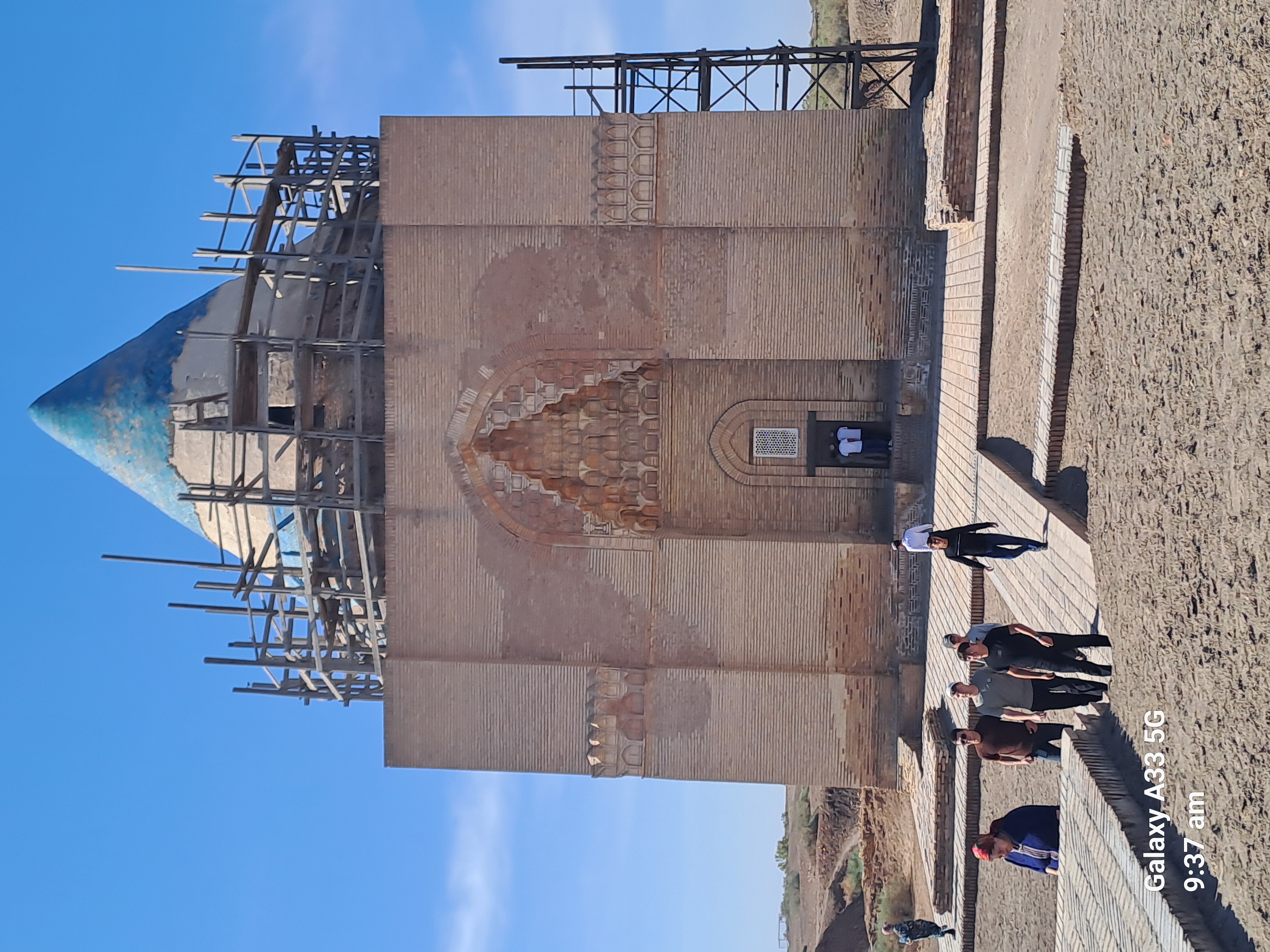
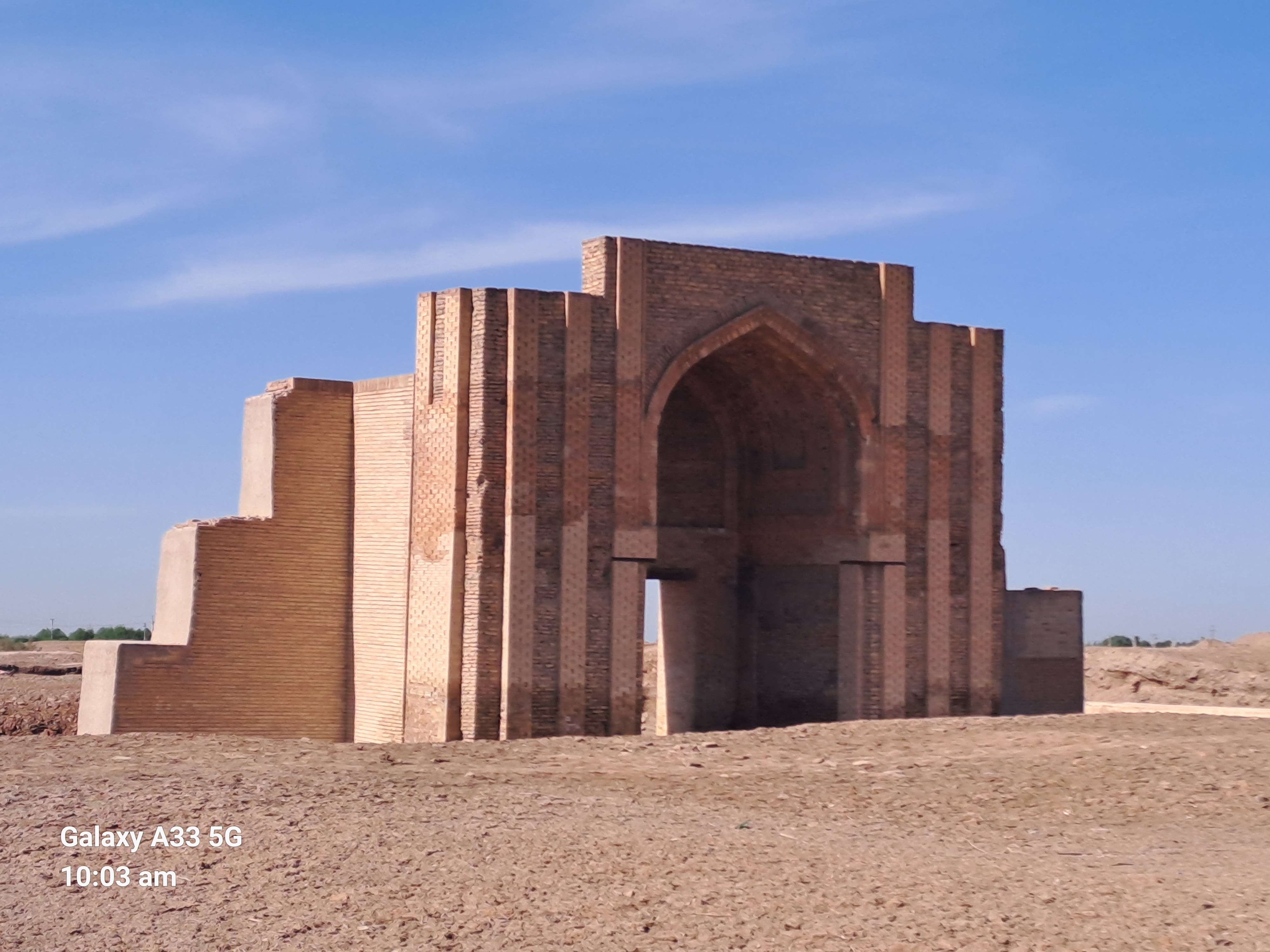

kjh